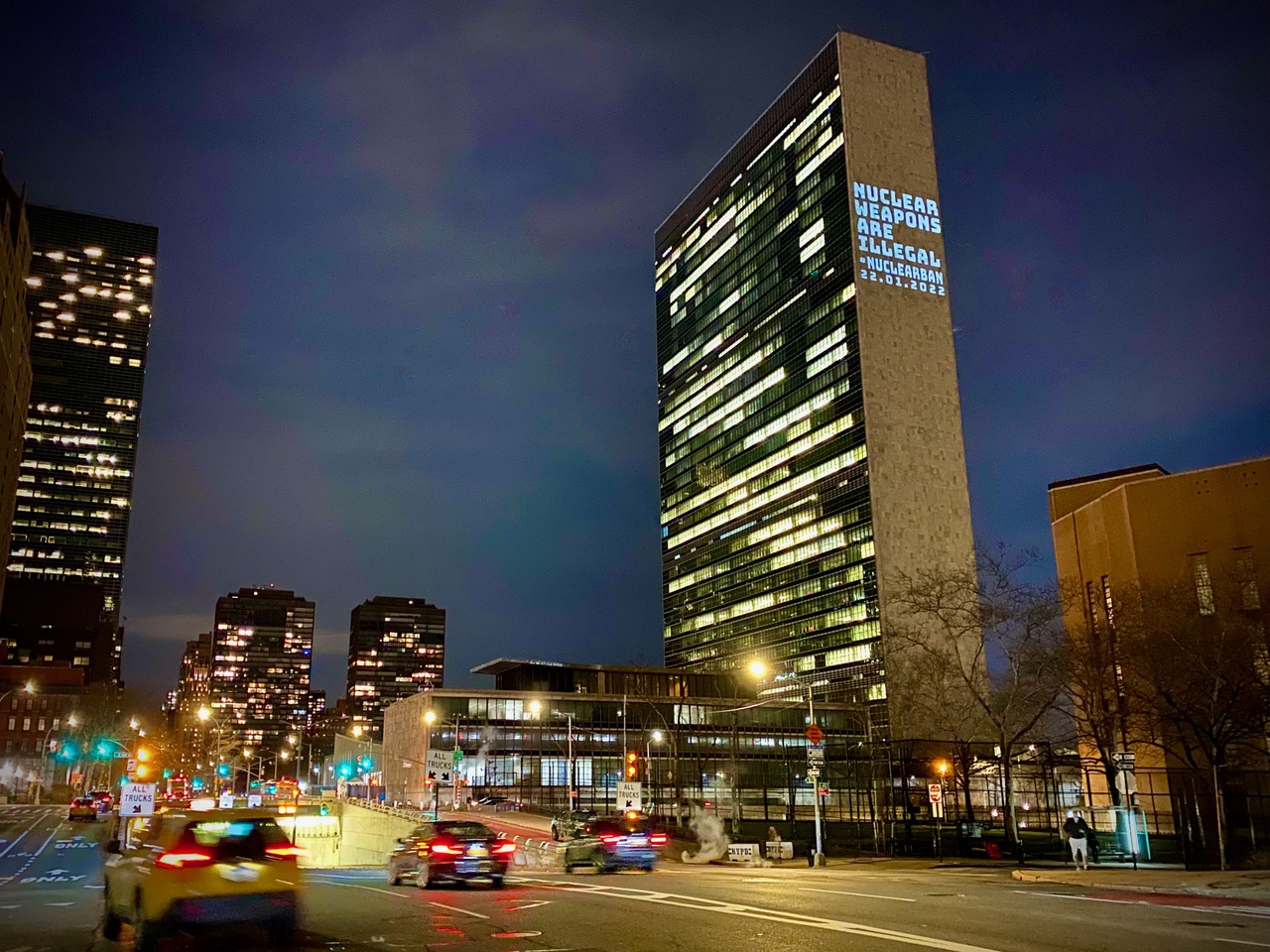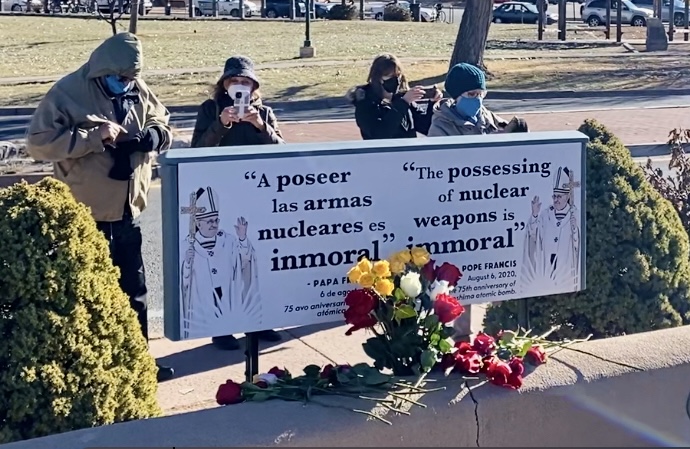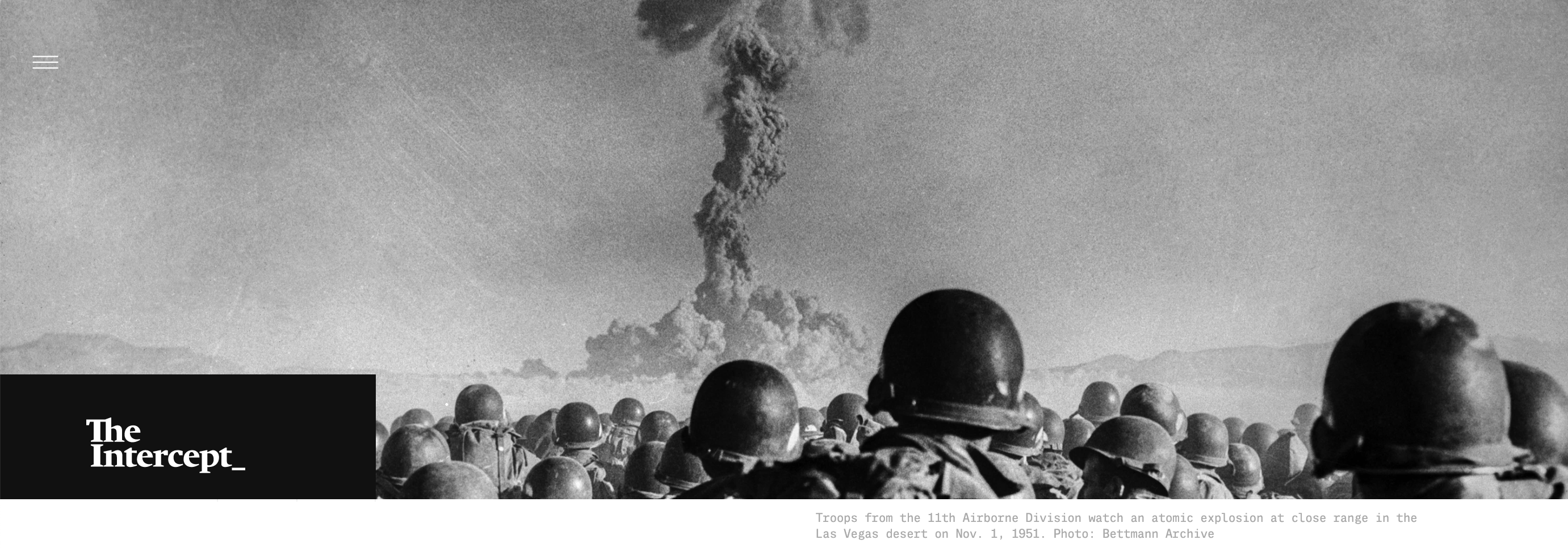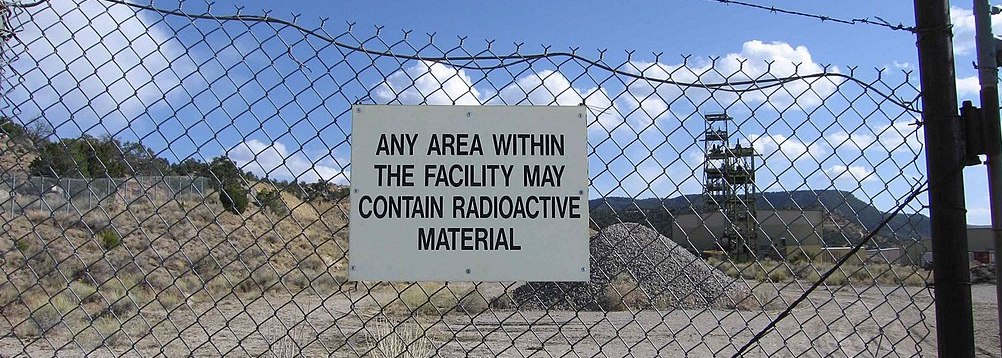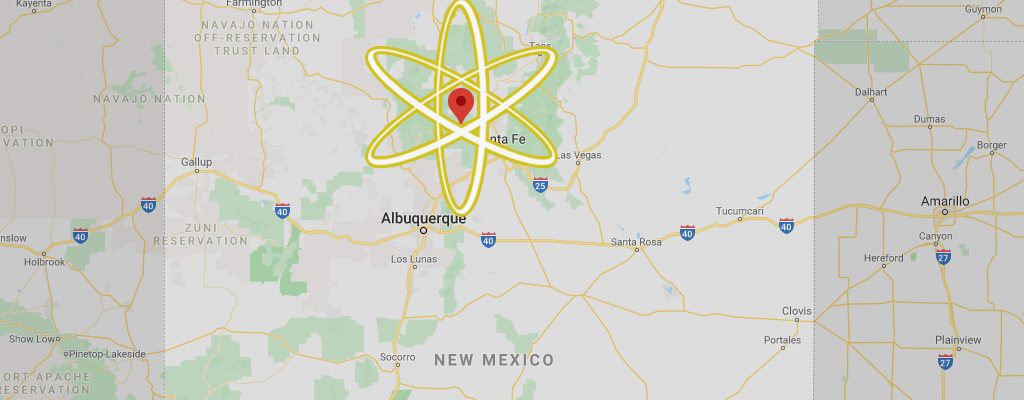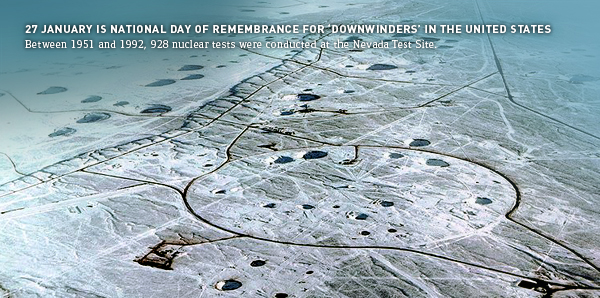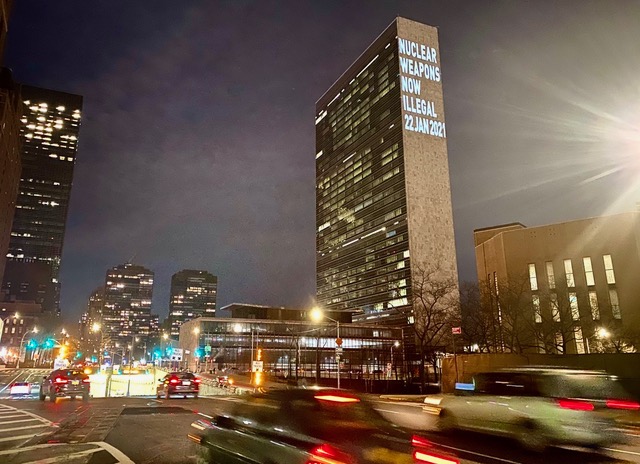2023 News Articles – All Posts
Nothing Found
It seems we can’t find what you’re looking for. Perhaps searching can help.
2022 Select Highlighted Press Items
Nuclear Modernization is the ’Absolute Minimum,’ STRATCOM Commander Says | March 8, 2022
US tested hypersonic missile in mid-March but kept it quiet to avoid escalating tensions with Russia | April 4, 2022
Putin’s Nuclear Threats Are a Wake-Up Call for the World | March 15, 2022
Intelligence report determines that Russia's WMD threats will grow as losses mount in Ukraine | March 19, 2022
China and the United States: It’s a Cold War, but don’t panic | March 10, 2022
Russian military doctrine calls a limited nuclear strike “de-escalation.” Here’s why. | March 8, 2022
North Korea says it will strike with nuclear weapons if South attacks | April 4, 2022
Flying Under The Radar: A Missile Accident in South Asia | April 4, 2022
2022 News Articles
“Celebrating The Banniversary – Ban Treaty First Anniversary 1/22/22″
“The Beginning of the End of Nuclear Weapons”
By Ann Suellentrop, Peace Works Kansas City | January 22, 2022
People around the world want to save the Earth from nuclear weapons, and they are demanding it! There has been a flurry of activity regarding nuclear weapons very recently ahead of the first anniversary of the Treaty on the Prohibition of Nuclear Weapons, or the Ban Treaty. It was announced this past Thursday, January 20, that the Doomsday Clock remains stuck at 100 seconds to midnight for the third straight year. This is due to the current second nuclear arms race, as well as other dangerous developments, such as climate catastrophe and automated and hypersonic weapons currently being developed.
…On January 11, Archbishop John C. Wester of Santa Fe, New Mexico sent a pastoral letter in support of nuclear weapons abolition and the Treaty on the Prohibition of Nuclear Weapons to all the parishes in his diocese. This is bold and prophetic as Los Alamos Nuclear Lab nearby was the site of the invention of the first nuclear bomb, and New Mexico has perhaps the largest stockpile of nuclear weapons in the world at Kirtland AFB near Albuquerque. He called for nonviolence and dialogue to rid the world of all nuclear weapons. See: https://www.icanw.org/archbishop_letter
Seeking a world without nuclear weapons
Jan. 22 is the one-year anniversary of the U.N. Treaty on the Abolition of Nuclear Weapons entering into force as international law. Today, 59 countries have ratified the Treaty on the Abolition of Nuclear Weapons, with several more countries on the verge of doing the same. The importance of this cannot be overstated. With more and more countries outlawing everything to do with nuclear weapons, it becomes increasingly harder for the nine countries possessing these weapons to defend their continued existence.
recorder.com | BY SUSAN LANTZ January 22, 2022
For instance, Germany, Norway, Sweden, Belgium, Netherlands, Italy are all likely to sign onto the Treaty on the Abolition of Nuclear Weapons eventually, with strong support already in their populations and parliaments. The United States currently has nuclear weapons in Belgium, Germany and Italy. After these countries ratify the treaty, the United States will be required to remove its weapons.
At doom’s doorstep: It is 100 seconds to midnight
2022 Doomsday Clock Statement
It is 100 seconds to midnight
© Bulletin of the Atomic Scientists Science and Security Board | January 20, 2022
To: Leaders and citizens of the world
Re: At doom’s doorstep: It is 100 seconds to midnight
Date: January 20, 2022
Last year’s leadership change in the United States provided hope that what seemed like a global race toward catastrophe might be halted and—with renewed US engagement—even reversed. Indeed, in 2021 the new American administration changed US policies in some ways that made the world safer: agreeing to an extension of the New START arms control agreement and beginning strategic stability talks with Russia; announcing that the United States would seek to return to the Iran nuclear deal; and rejoining the Paris climate accord. Perhaps even more heartening was the return of science and evidence to US policy making in general, especially regarding the COVID-19 pandemic. A more moderate and predictable approach to leadership and the control of one of the two largest nuclear arsenals of the world marked a welcome change from the previous four years.
Still, the change in US leadership alone was not enough to reverse negative international security trends that had been long in developing and continued across the threat horizon in 2021
How Martin Luther King, Jr.’s multifaceted view on human rights still inspires today
The legendary civil rights activist pushed to ban nuclear weapons, end the Vietnam War, and lift people out of poverty through labor unions and access to healthcare.
“It cannot be disputed that a full-scale nuclear war would be utterly catastrophic,” he told Ebony magazine in an interview. “The principal objective of all nations must be the total abolition of war.”
© National Geographic | BY EMILY MARTIN January 17, 2022

Virtual Press Conference & Link to Santa Fe Archbishop John C. Wester’s New Pastoral Letter “Living in the Light of Christ’s Peace: A Conversation Toward Nuclear Disarmament”
Living in the Light of Christ’s Peace – A conversation toward nuclear disarmament
Archbishop John C. Wester’s live press conference to discuss his pastoral letter on the growing need for disarmament.
PASTORAL LETTER
The Time for Nuclear Disarmament is Now
“We need nuclear arms control, not an escalating nuclear arms race.”
Santa Fe New Mexican: MY VIEW JOHN C. WESTER | By John C. Wester santafenewmexican.com | January 15, 2022
In September 2017, I traveled to Japan and visited Hiroshima and Nagasaki. It was a somber, sobering experience as I realized that on Aug. 6, 1945, humanity crossed the line into the darkness of the nuclear age. Historically, the Archdiocese of Santa Fe has been part of a peace initiative, one that would help make sure these weapons would never be used again. I believe it is time to rejuvenate that peace work.
We need to sustain a serious conversation in New Mexico and across the nation about universal, verifiable nuclear disarmament. We can no longer deny or ignore the dangerous predicament we have created for ourselves with a new nuclear arms race, one that is arguably more dangerous than the past Cold War. In the face of increasing threats from Russia, China and elsewhere, I point out that a nuclear arms race is inherently self-perpetuating, a vicious spiral that prompts progressively destabilizing actions and reactions by all parties, including our own country.
US Archbishop Warns of New Nuclear Arms Race
Archbishop of Santa Fe in New Mexico: [Nuclear] Armament a “diabolical spiral”
Source (Translated from German): kathpress.at | January 13, 2022

WASHINGTON, 01/13/2022 (KAP) The Catholic Archbishop of Santa Fe, New Mexico, John Wester, has issued a strong warning of a new nuclear arms race. “We need nuclear arms control, not an escalating nuclear arms race,” he says in a recent pastoral letter, according to the Catholic News Agency (KNA). Nuclear armament is a “diabolical spiral” that endangers everyone.
Wester’s diocese of New Mexico is particularly hard hit by nuclear armaments. Nuclear weapons are manufactured at Los Alamos and at Sandia National Laboratories. The US government stores nuclear weapons at Kirtland Air Force Base in Albuquerque.
New Mexico Church Official Urges Nuclear Disarmament Talks
The head of one of the oldest Roman Catholic dioceses in the U.S. says now is the time to rejuvenate a global conversation about the need for nuclear disarmament and avoiding a new nuclear arms race.”
“We can no longer deny or ignore the extremely dangerous predicament of our human family and that we are in a new nuclear arms race far more dangerous than the first,” he said. “We need nuclear arms control, not an escalating nuclear arms race.”
© Associated Press | By SUSAN MONTOYA BRYAN, Associated Press | January 11, 2022
ALBUQUERQUE, N.M. (AP) — The head of one of the oldest Roman Catholic dioceses in the United States says now is the time to rejuvenate and sustain a global conversation about the need for nuclear disarmament and how to develop ways to avoid a new nuclear arms race.
Santa Fe Archbishop John Wester released a lengthy pastoral letter on the subject Tuesday, noting during a virtual news conference that Los Alamos National Laboratory — the birthplace of the atomic bomb — is preparing to ramp up production of the plutonium cores used in the nation’s nuclear arsenal.
Wester called the arms race a vicious spiral.
Archbishop of Santa Fe Issues Pastoral Letter in Support of TPNW
On 11 January 2022, Archbishop John C. Wester of Santa Fe, New Mexico circulated a letter in support of nuclear weapons abolition and the Treaty on the Prohibition of Nuclear Weapons to all the parishes in his diocese.
![]() ICAN Campaign News | January 11, 2022
ICAN Campaign News | January 11, 2022
In the letter, Wester outlines the risks and consequences of the new nuclear arms race and highlights the unique role of New Mexico in the U.S. nuclear weapons complex and of the Santa Fe diocese to support nuclear disarmament. He calls for an open dialogue on nuclear disarmament and redirecting resources from the nuclear arms race to peaceful objectives, like cleaning up nuclear contamination and addressing climate change.
New Mexico is at the heart of the U.S. nuclear weapons complex, with two major nuclear weapons laboratories – the Los Alamos and Sandia National Laboratories- located in the state and nearly 40% of the Department of Energy’s nuclear weapons budget allocated for work in New Mexico. It was also the site of the first nuclear test explosion in July 1945 and has the largest repository of nuclear weapons in the country.
The Archdiocese of Santa Fe has a “special responsibility” he states, to support the TPNW and to encourage its active implementation.
“It is the duty of the Archdiocese of Santa Fe, the birthplace of nuclear weapons, to support that Treaty while working toward universal, verifiable nuclear disarmament,” Wester writes.
Waste Isolation Pilot Plant struggles to control costs, per annual performance evaluation
“Conducted by the DOE’s Carlsbad Field Office (CBFO), the evaluation called for improvements in cost control, schedule and risk management, along with work planning and control processes.”
By Adrian Hedden Carlsbad Current-Argus January 12, 2022 currentargus.com
Lingering struggles to complete construction projects on schedule while controlling costs at the Waste Isolation Pilot Plant factored into the U.S. Department of Energy’s annual fee allotment to primary contractor Nuclear Waste Partnership (NWP).
NWP earned 67 percent of its potential, performance-based fee – about $10.9 million of about $16.2 million available to the contractor in Fiscal Year 2021.
About $7.6 million of the fee was awarded for specific task incentives with $10.9 million available, and the other $3.3 million came from the subjective portion of the evaluation from a total offering of $5.3 million.
Archbishop Wester to Release Pastoral Letter on Tuesday Calling for Nuclear Disarmament
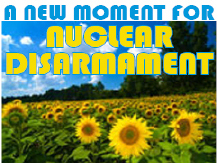

Pax Christi USA paxchristiusa.org | January 10, 2021
NOTE: The following press release is from the Archdiocese of Santa Fe announcing a press conference on Tuesday, January 11th, where the Archbishop will discuss his pastoral letter, “Living in the Light of Christ’s Peace: A Conversation Toward Nuclear Disarmament”. Pax Christi USA has eagerly anticipated the archbishop’s letter and we wanted to share the release with our membership who can watch the press conference at the link provided in the email. As we approach the 25th anniversary of our statement on the morality of nuclear deterrence, signed by 75 U.S. Catholic bishops in 1998, we welcome this extraordinary, prophetic letter and look forward to the conversation it generates within the U.S. Catholic Church, supporting Pope Francis’ statement at Hiroshima in 2019, “The use of atomic energy for purposes of war is immoral, just as the possessing of nuclear weapons is immoral.”
ALBUQUERQUE – Monday, January 10, 2022 – IMMEDIATE RELEASE – Most Reverend John C.Wester, Archbishop of Santa Fe, will hold a press conference for accredited media to discuss is pastoral letter, “Living in the Light of Christ’s Peace: A Conversation Toward Nuclear Disarmament” on Tuesday, January 11, 2022 at 9:00 a.m. MST via Zoom (https://us02web.zoom.us/j/83010373874?pwd=QTkvTkZpNDRlbDBiNWd3dU9IRnhWUT09). The press conference will be livestreamed at https://youtu.be/kHS2C1wIBeQ.
Archbishop Wester will release his pastoral letter on the urgent need for nuclear disarmament and avoiding a new nuclear arms race. Pope Francis has made clear statements about the immorality of possessing nuclear weapons, moving the Church from past conditional acceptance of “deterrence” to the moral imperative of abolition. The Archdiocese of Santa Fe has a special role to play in advocating for nuclear disarmament given the presence of two nuclear weapons laboratories and the United States of America’s largest repository of warheads located within its boundaries. He therefore believes the archdiocese has a unique role to play in encouraging a future world free of nuclear weapons.
Archbishop Wester states, “The Archdiocese of Santa Fe has a special responsibility not only to support the Treaty on the Prohibition of Nuclear Weapons, but also to encourage its active implementation.” He goes on to “…invite us to have a conversation together about what it means to follow the risen, nonviolent Jesus who calls us to be peacemakers, put down the sword, and love everyone, even the enemies of our nation.”
Archbishop Wester’s pastoral letter has the support of four Nobel Peace Prize laureates.
Key Lab Used for WWII Atomic Bomb Development Still 14 Years From Clean Up, Maybe More
Watchdog groups said it wasn’t until the state sued in February 2021 that the DOE proposed boosting the cleanup budget at the lab by about one-third. Before that, budgets were flat, with the groups arguing that DOE had no incentive to seek more funding.
“The conclusion I draw from it is the New Mexico Environment Department gets a lot more from the stick than it does from the carrot with respect to making the laboratory and DOE truly committed to comprehensive cleanup,” said Jay Coghlan, executive director of Nuclear Watch New Mexico.
BY CHARLOTTE TRATTNER , NEWSWEEK | January 7, 2022 newsweek.com
Concerns Persist About Pace of Cleanup at US Nuclear Lab
Watchdog groups said it wasn’t until the state sued in February 2021 that the DOE proposed boosting the cleanup budget at the lab by about one-third. Before that budgets were flat, with the groups arguing that DOE had no incentive to seek more funding.
“The conclusion I draw from it is the New Mexico Environment Department gets a lot more from the stick than it does from the carrot with respect to making the laboratory and DOE truly committed to comprehensive cleanup,” said Jay Coghlan, executive director of Nuclear Watch New Mexico.
BY SUSAN MONTOYA BRYAN, Associated Press | January 7, 2022 usnews.com

Officials at one of the nation’s top nuclear weapons laboratories are reiterating their promise to focus on cleaning up Cold War-era contamination left by decades of research and bomb-making.
DOE/NNSA To Start New LANL Site-Wide Environmental Impact Statement
During the question and answer period, Nuclear Watch New Mexico executive director Jay Coghlan said he was fascinated to hear that there was some funding allocated for a new SWEIS.
“The last one was in 2008 and it’s woefully outdated. To use NEPA terms, there’s a lot of new information and changed circumstances,” Coghlan said. “…And then there’s the question of the scope of the SWEIS, which would by definition imply it should consider the full range of issues from cleanup to pit production. What more can be said about a new SWEIS for Los Alamos (National Laboratory) at this time because as far as I know this is the first inkling whatsoever that there will be a new one?”
BY MAIRE O’NEILL, LOS ALAMOS REPORTER | January 6, 2022 losalamosreporter.com
Una Introducción a Hanford
El Sitio Nuclear de Hanford es el lugar más contaminado de los EE. UU. ¿Le interesa saber por qué? Pues hay suerte, porque tenemos una presentación que explica este asunto y más. Haga clic para ver el video acerca de la historia y la limpieza del Sitio Nuclear de Hanford. Es una buena manera de aprender más sobre un lugar contaminado pero poco conocido en el estado de Washington. ¡Anímate a verlo!
Yucca Mountain remains in debate over nuclear waste storage
“I’ve always fought misguided efforts to deposit nuclear waste in Nevada, and I’ll keep working with the Nevada delegation to pass my consent-based siting bill that would ensure these dangerous materials are never dumped on our state,” – Catherine Cortez Masto, D-Nev., a former state attorney general who also has fought federal efforts to build a repository at Yucca Mountain.”
Santa Fe New Mexican / Gary Martin Las Vegas Review-Journal | January 1, 2021
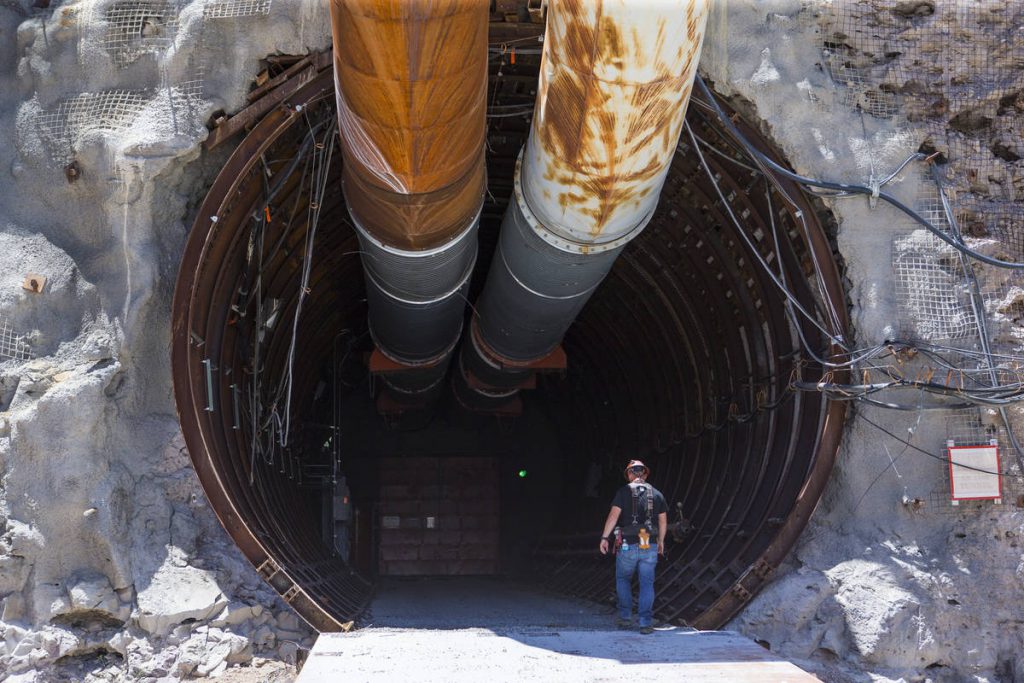
LAS VEGAS, Nev. — Mounting opposition to proposed nuclear waste storage sites in Texas and New Mexico has kept Yucca Mountain in Nevada in the national debate over what to do with the growing stockpile of radioactive material scattered around the country.
The Biden administration is opposed to Yucca Mountain and announced plans this month to send waste to places where state, local and tribal governments agree to accept it. That stance is shared by Nevada elected officials, tribal leaders and business and environmental groups.
But until the 1987 Nuclear Waste Policy Act is changed by Congress, the proposed radioactive waste repository 90 miles north of Las Vegas remains the designated permanent storage site for spent fuel rods from commercial nuclear plants.
“That’s what worries me. Until you get a policy in place, it will always be something you have to watch,” U.S. Rep. Dina Titus, D-Nev., told the Las Vegas Review-Journal.
An expert on atomic testing and American politics, Titus as a professor at the University of Nevada, Las Vegas wrote a 1986 book on Nevada’s nuclear past.
As an elected state and congressional lawmaker, she has opposed a permanent storage facility at Yucca Mountain.
Titus introduced legislation in past sessions of Congress that adopts recommendations by a 2012 Blue Ribbon Commission under the Obama administration to send the waste to states that want it.
Spent Fuel: The Risky Resurgence of Nuclear Power
[Letter from Washington]
“In the face of escalating alarm about climate change, the siren song of “clean and affordable and reliable” power finds an audience eager to overlook a business model that is dependent on state support and often greased with corruption; failed experiments now hailed as “innovative”; a pattern of artful disinformation; and a trail of poison from accidents and leaks (not to mention the 95,000 tons of radioactive waste currently stored at reactor sites with nowhere to go) that will affect generations yet unborn.”
BY: Andrew Cockburn © HARPER’S | From the January 2022 Issue
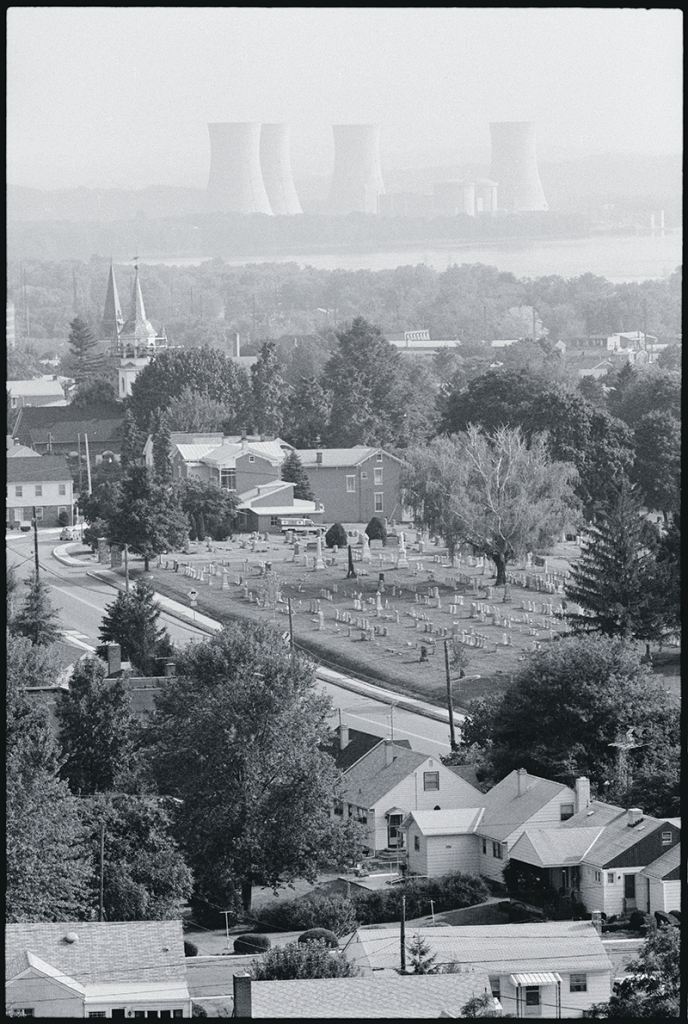 Last June, Bill Gates addressed a crowd of politicians and reporters in Cheyenne, Wyoming. “Fifteen years ago I assembled a group of experts . . . to solve the dual problems of global energy poverty and climate change,” the sweater-clad multibillionaire declared, speaking by video. “It became clear that an essential tool to solving both is advanced nuclear power.” But the technology, he continued, needed to become safer and less expensive. To this end, he had promised to invest $1 billion in TerraPower, a company he founded in 2008 to develop small modular reactors that can be churned out on an assembly line. He was now happy to announce the construction of a plant on the site of a defunct coal facility in Wyoming.
Last June, Bill Gates addressed a crowd of politicians and reporters in Cheyenne, Wyoming. “Fifteen years ago I assembled a group of experts . . . to solve the dual problems of global energy poverty and climate change,” the sweater-clad multibillionaire declared, speaking by video. “It became clear that an essential tool to solving both is advanced nuclear power.” But the technology, he continued, needed to become safer and less expensive. To this end, he had promised to invest $1 billion in TerraPower, a company he founded in 2008 to develop small modular reactors that can be churned out on an assembly line. He was now happy to announce the construction of a plant on the site of a defunct coal facility in Wyoming.
Gates and other backers extoll the promise of TerraPower’s Natrium reactors, which are cooled not by water, as commercial U.S. nuclear reactors are, but by liquid sodium. This material has a high boiling point, some 1,600 degrees Fahrenheit, which in theory enables the reactor to run at extreme temperatures without the extraordinary pressures that, in turn, require huge, expensive structures. “It’s smaller, cheaper, and inherently safe,” Jeff Navin, the director of external affairs at TerraPower, told me.
Will Construction be Delayed on the New Shaft at WIPP?
“The Environment Department “should be equally considerate towards the judicial review process as it was in the administrative permit modification process, to ensure the courts have sufficient time to review objectively the facts and arguments associated with the appeal.” – Steve Zappe, a member of the Environment Department who worked on WIPP for 17 years.”
Concerned Citizens for Nuclear Safety | December 23, 2021
Two appeals have been filed in the New Mexico Court of Appeals to challenge the decision by New Mexico Environment Department Secretary James Kenney to approve the new shaft at the Waste Isolation Pilot Plant (WIPP). Concerned Citizens for Nuclear Safety filed the second appeal on November 29th. On November 9th, Southwest Research and Information Center and Cynthia Weehler had filed the first appeal. Visit: env.nm.gov/opf/docketed-matters/, scroll down to HWB 21-02 – APPEAL: Waste Isolation Pilot Plant: Class 3 Permit Modification Request, “Excavation of a New Shaft and Associated Connecting Drifts.
SRIC and Weehler also asked Secretary Kenney for a stay, that is, a delay, of shaft construction until the Court of Appeals rules on their appeal. On the stay motion, Secretary Kenney can grant, or deny, or take no action. If he does not grant the stay, or if he takes no action by January 10th, a stay motion then could be filed with the Court of Appeals. Visit: env.nm.gov/opf/docketed-matters/ , scroll down to HWB 21-02 –Waste Isolation Pilot Plant: Class 3 Permit Modification Request, “Excavation of a New Shaft and Associated Connecting Drifts.
Unfortunately, key documents are missing, including the SRIC/Weehler Motion for Stay Pending Appeal, the Hearing Officer’s Report and the Secretary’s Final Order.
The stay motion was supported by three affidavits. Cynthia Weehler stated that she purchased her home near U.S. Highway 285 knowing that the WIPP Permit anticipated that shipments to WIPP would end in 2024. Now, the WIPP expansion plan that requires the new shaft “would result in thousands of additional shipments coming near my house for many decades.” She is very concerned that accidents could result in health effects and “such shipments will reduce my property values.”
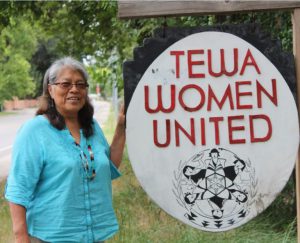 Kathleen Wan Povi Sanchez, an Elder from the Tewa Pueblo of San Ildefonso and among the founding mothers of Tewa Women United, stated in her affidavit that an increase in waste transportation near two schools located on New Mexico Highway 502 would endanger the health of Pueblo children in attendance. Further, “The WIPP expansion plan would result in thousands of new shipments using [] Highway 502 for decades transporting plutonium from the Pantex Plant near Amarillo, Texas to [Los Alamos National Laboratory], and from [Los Alamos] to the Savannah River Site, followed by shipments from that site to WIPP.”
Kathleen Wan Povi Sanchez, an Elder from the Tewa Pueblo of San Ildefonso and among the founding mothers of Tewa Women United, stated in her affidavit that an increase in waste transportation near two schools located on New Mexico Highway 502 would endanger the health of Pueblo children in attendance. Further, “The WIPP expansion plan would result in thousands of new shipments using [] Highway 502 for decades transporting plutonium from the Pantex Plant near Amarillo, Texas to [Los Alamos National Laboratory], and from [Los Alamos] to the Savannah River Site, followed by shipments from that site to WIPP.”
Some LANL plutonium stored in vulnerable containers
An anti-nuclear group said this type of plutonium isn’t explosive but would be hazardous to breathe.
It’s possible the lab made this type of plutonium a lesser priority while ramping up pit production, and now it plans to take big shipments, said Scott Kovac, research and operations director for the nonprofit Nuclear Watch New Mexico.
“That’s a huge amount to accept,” Kovac said. “Now they’re asking NNSA to say that’s OK.”
BY SCOTT WYLAND, THE SANTA FE NEW MEXICAN | December 23, 2021 santafenewmexican.com
Los Alamos National Laboratory wants to store high heat-emitting plutonium in uncertified containers that, if breached in a fire or an earthquake, could expose workers and the public to hazardous doses of radiation, according to a government watchdog’s report.
The lab’s primary contractor seeks a waiver to store large quantities of plutonium-238 in unapproved containers that, if breached, could expose the public to 83 to 378 rem, the Defense Nuclear Facilities Safety Board said in a December report, referring to the unit that measures radiation absorbed in living tissue.
US Still Doesn’t Know How and Where It Will Store Its Growing Pile of Nuclear Waste
The estimated cost of handling the degrading radioactive material is rising steadily — $512 billion at last count.
“DoE is now running up against a statutory limit for how much waste it can store in the space, so it recently changed its counting method to exclude space between storage drums as storage space. New Mexico regulators approved the change but the matter is being challenged in court.
“They knocked a third out of it with a slight of hand. That will allow them a lot more waste,” complains Scott Kovac, operations & research director of Nuclear Watch New Mexico (NWNM), a local anti-nuclear group.”
BY CHARLES PEKOW, EARTH ISLAND JOURNAL | December 23, 2021 earthisland.org
A nuclear watchdog group wants a state commission to nullify its decision on a permit for Los Alamos National Laboratory’s radioactive liquid waste treatment facility, arguing the panel’s former chairwoman backed a ruling favorable to the lab while she sought a job with the federal agency that oversees it.
U.S. Urges Japan Not to Join Nuclear Ban Treaty Meeting
“Germany’s move [planning to to attend the meeting as an observer] has put Japan — which has stated it aspires to a world free of nuclear weapons as the only country to have suffered the devastation of atomic bombings — in the spotlight. Both countries are key U.S. allies that rely on American nuclear forces for protection.”
© KYODO NEWS | December 20, 2021
The United States has urged Japan not to attend as an observer the first meeting of signatories to a U.N. treaty banning nuclear weapons, according to U.S. government sources, reflecting Washington’s opposition to the pact.
The Japanese government has suggested it will come into line with the United States and take a cautious approach to the issue, the sources said. Prime Minister Fumio Kishida told a parliamentary committee on Thursday that Tokyo has no “concrete plans” to attend the meeting as an observer.
The sources said the U.S. administration of President Joe Biden made the request to Japan through diplomatic channels after German political parties announced Nov. 24 that the deal for the new ruling coalition included taking part as an observer at the meeting scheduled for March in Vienna.
Maybe because of the request, Kishida also suggested last week that participation in the meeting would be premature “before building a relationship of trust with President Biden.”
Archbishop calls for nuclear disarming
At least 125 people were present for the service, many bearing roses in honor of the Lady of Guadalupe. Among them was Karen Weber, who said it’s “highly symbolic” for Wester to speak out on the “abolishment of nuclear weapons.”
SANTA FE NEW MEXICAN By Robert Nott [email protected]
Looking up at the sky as a young teen one day in Daly City, Calif., Archbishop John C. Wester had one thought as he saw military planes overheard.
Were they ours, or were they Russian planes?
The year was 1962, perhaps the first time nuclear war between the two superpowers seemed likely to erupt as the Cuban Missile Crisis played out and students were taught to prepare for an atomic attack by diving under their desks at schools.
“I don’t think going under our desks was very helpful,” Wester said Sunday in Santa Fe, moments before issuing a call for the world to rid itself its nuclear weapons.
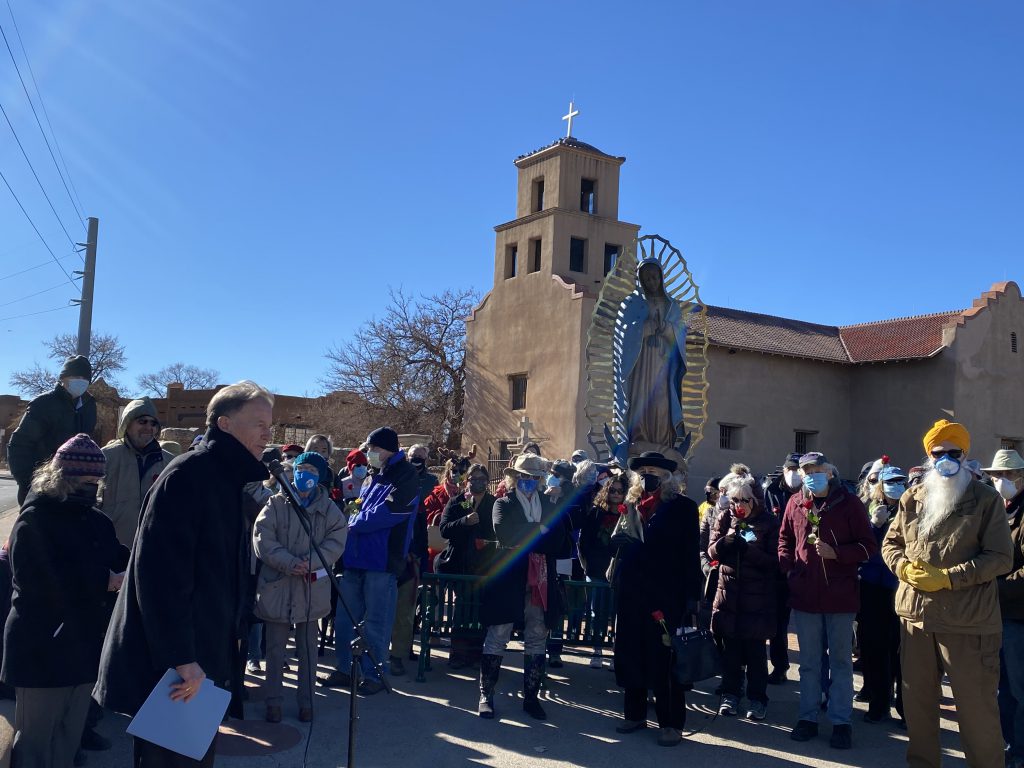
Now, some 60 years later, he said he wants to do more to end the threat of an atomic war. Wester spoke and prayed during a 30-minute prayer service and ceremony at the Shrine of Our Lady of Guadalupe before he unveiled a sign bearing an image of Pope Francis and a quote uttered by the pope in Hiroshima in 2020: “The possession of nuclear arms is immoral.”
Wester said “our archdiocese needs to be facilitating, encouraging an ongoing conversation” about nuclear disarmament.
Why Los Alamos lab is working on the tricky task of creating new plutonium cores
“While the labs work on relearning high-stakes industrial techniques for terrifying weapons, it is estimated that most of the existing warheads will remain fully functional for at least 100 years after first manufacture. Given an arsenal of hundreds of deployed warheads, the stakes of failure to modernize are that, in the event of the worst war humanity has ever known, some warheads might fail to detonate, letting millions live.”
BY KELSEY D. ATHERTON | POPULAR SCIENCE popsci.com December 18, 2021

Plutonium pits, the potent hearts of modern nuclear weapons, degrade over time. As these cores decay, so too does the certainty that they will work as designed when detonated. Los Alamos National Laboratory, the organization that grew out of the Manhattan Project to design and equip the nuclear arsenal of the Cold War, is advancing towards its goal of manufacturing 30 new plutonium pits to go inside nuclear bomb cores by 2026.
The project is both a specific manufacturing challenge, and an opening for the United States to newly consider how many warheads it needs on hand to achieve its stated strategic objectives.
Inside a nuclear warhead, a plutonium pit is crucial to setting off the sequence of reactions that make a thermonuclear explosion. Inside the pit is a gas, like deuterium/tritium, and around the pit is chemical explosive. When the chemical explosive detonates, it compacts the plutonium around the gas until the core is dense enough to trigger a fission reaction. What makes a warhead thermonuclear, as opposed to just atomic, is that this is combined in the same warhead with a uranium core, which creates a fusion explosion.
Hundreds of Scientists Ask Biden to Cut the U.S. Nuclear Arsenal
The letter argued that “by making clear that the United States will never start a nuclear war, it reduces the likelihood that a conflict or crisis will escalate to nuclear war.” And it would demonstrate, they argued, that the United States was committed to the Nuclear Non-Proliferation Treaty, which obliges the nuclear-armed states to move toward reducing their arsenals.
Written By: Jesus Jiménez © 2021 The New York Times Company The New York Times | December 17, 2021
Nearly 700 scientists and engineers, including 21 Nobel laureates, asked President Joe Biden on Thursday to use his forthcoming declaration of a new national strategy for managing nuclear weapons as a chance to cut the US arsenal by a third and to declare, for the first time, that the United States would never be the first to use nuclear weapons in a conflict.
The letter to Biden also urged him to change, for the first time since President Harry S. Truman ordered the dropping of the atomic bomb over Hiroshima, the American practice that gives the commander in chief sole authority to order the use of nuclear weapons. The issue gained prominence during the Trump administration, and the authors of the letter urged Biden to make the change as “an important safeguard against a possible future president who is unstable or who orders a reckless attack.”
Today I had the honor of delivering a letter on nuclear weapons issues to @POTUS signed by 697 scientists & engineers, including 21 Nobel laureates & 69 members of the National Academies. It recommends four steps to reduce the likelihood of nuclear war: https://t.co/o9ktgLlOxd pic.twitter.com/stjn9BJCCu
— Stephen Young (@StephenUCS) December 16, 2021
Politico-Opinion | Congress Approved $778 Billion for the Pentagon. That Means We Can Afford Build Back Better.
Some senators say Biden’s social and climate bill costs too much, but comparing it to the military spending plan they just passed suggests otherwise.
This week, the families of 61 million children received their final payments under the expanded Child Tax Credit. This credit has kept 10 million children above the poverty line, but it is expiring as the Senate delays a vote to renew it through the Build Back Better Act.
Instead, on the same day these last payments went out, the Senate voted to approve a $778 billion military spending budget — four times as much as the annual cost of the entire Build Back Better plan. Yet we’ve heard endlessly about how it’s Build Back Better that needs to be gutted so we can skimp and save.
Germany’s Baerbock pushes for nuclear disarmament
German Foreign Minister Annalena Baerbock called for a “new momentum” to nuclear disarmament as she met with her Swedish counterpart with an eye toward a review of a non-proliferation treaty.
By Ali Harb Aljazeera aljazeera.com
Germany and Sweden have paired up to find ways to get the world’s nuclear powers to move toward committing to disarmament. The foreign ministers met in Stockholm to plot the way forward ahead of next month’s review of the Non-Proliferation Treaty (NPT).
Baerbock has been in talks with her Swedish counterpart Ann Linde and met with the Stockholm Initiative, a group of 16 countries seeking to get rid of nuclear weapons.
“Our joint goal is clear: a world free of atomic weapons,” Baerbock said during a press conference with Linde.
“Our message to the review conference will be clear: Nuclear weapons countries have to push ahead with nuclear disarmament,” read a statement from the initiative, calling for an irreversible, transparent end to nuclear weapons subject to oversight.
Protesters Denounce French Push to Label Nuclear as Sustainable Energy
“By taking the lead of the toxic alliance between fossil gas and nuclear (energy) at a European level, Emmanuel Macron clearly sides with the polluters’ camp. Nuclear is not a green energy: it produces radioactive waste that piles up across the country”
By Reuters | December 14, 2021

PARIS (Reuters) – Demonstrators unfurled a banner declaring “Gas & nuclear are not green” outside France’s foreign ministry on Tuesday in protest at a government drive to label nuclear energy and fossil gas as sectors for climate-friendly investment.
One of the about 20 protesters, wearing a mask of President Emmanuel Macron, chained himself to a gas bottle and a nuclear barrel outside the ministry’s headquarters in Paris. Another held a banner that read “Macron shame on you.”
The European Union is preparing a rulebook on climate friendly investments, which from next year will define which activities can be labelled as green in sectors including transport and buildings.
The EU’s aim is to restrict the green investment label to climate-friendly activities, steer cash into low-carbon projects and stop companies or investors making unsubstantiated environmental claims.
NEW Y-12 CONTRACTORS HAVE HISTORY OF NUCLEAR SAFETY FAILURES, MILLIONS IN PENALTIES AND FINES FOR VIOLATIONS
“The public deserves an explanation,” said Ralph Hutchison, coordinator of the Oak Ridge Environmental Peace Alliance. “Given the persistent criticality safety problems at Y-12, it is astonishing that the National Nuclear Security Administration has turned the management over to Fluor and Amentum, two companies that have racked up millions of dollars in fines in the last two decades for nuclear safety violations.”
immediate release: December 13, 2021
more information: Ralph Hutchison 865 776 5050 / [email protected]
According to the web site goodjobsfirst.com, which tracks violations in government contracting, AECOM, parent company of Amentum, has been penalized more than $167 million for 114 violations since 2000. Fifty-one of those violations were safety related, for a total of $4.5 million in penalties and fines; of that total, $3,866,250 was assessed for nuclear safety violations.
“From the beginning of October to mid-November, the Defense Nuclear Facilities Safety Board documented nine nuclear safety incidents at Y-12, an average of more than one a week,” Hutchison said. “Unfortunately, this is not an anomaly—Y-12 is consistently plagued by nuclear safety issues, many of them from legacy activities or the ongoing degradation of the buildings used to manufacture nuclear weapons components.
“And the equally sad truth is that contractors at Y-12 have a history of failing to aggressively address issues as they arise. An outside assessment delivered in October noted that Consolidated Nuclear Services declared some cases ‘closed’ even though the actual problem had not been corrected and the cases were, in fact, still open.
Pilgrim Nuclear Plant Will Not Release Contaminated Water In 2022
By CBSBoston.com Staff December 7, 2021
PLYMOUTH (CBS) – The company managing the shutdown of the Pilgrim Nuclear Plant now says it will not release contaminated water into Cape Cod Bay in 2022 as planned.
Holtec International planned to discharge the water sometime early next year.
But in a statement on Monday, they promised to store the water on site through 2022 and search for other options to get rid of it.
“We appreciate and understand the public’s questions and concerns and remain committed to an open, transparent process on the decommissioning of Pilgrim Station focused on the health and safety of the public, the environment, and on-site personnel,” Holtec said in a statement.
Pilgrim went offline in 2019.
House Passes $768 Billion Defense Policy Bill
“I support having by far the strongest military in the world and the good-paying defense jobs in my district that protect our troops,” said Representative Andy Levin, Democrat of Michigan. “But I cannot support ever-increasing military spending in the face of so much human need across our country.”
By: Catie Edmondson The New York Times | December 7, 2021
WASHINGTON — The House on Tuesday overwhelmingly passed a $768 billion defense policy bill after lawmakers abruptly dropped proposals that would have required women to register for the draft, repealed the 2002 authorization of the Iraq war and imposed sanctions for a Russian gas pipeline, in a late-year drive to salvage a bipartisan priority.
The legislation, unveiled hours before the vote, put the Democratic-led Congress on track to increase the Pentagon’s budget by roughly $24 billion above what President Biden had requested, angering antiwar progressives who had hoped that their party’s control of the White House and both houses of Congress would lead to cuts to military programs after decades of growth.
Instead, the measure provides significant increases for initiatives intended to counter China and bolster Ukraine, as well as the procurement of new aircraft and ships, underscoring the bipartisan consensus on Capitol Hill for continuing to spend huge amounts of federal money on defense initiatives, even as Republicans lash Democrats for spending freely on social programs.
Energy Department to spend $15.5M to upgrade route from Los Alamos lab to waste site [WIPP]
“Essentially blessing what DOE was going to have to do anyway in order to expand nuclear weapons activities and waste disposal,” said Jay Coghlan, executive director of Nuclear Watch New Mexico. “And once again demonstrated the subservience of our state government to the nuclear weapons industry here in New Mexico.”
By Scott Wyland [email protected] Santa Fe New Mexican December 6, 2021 santafenewmexican.com
The N.M. 4 and East Jemez Road intersection in the far northwestern corner of Santa Fe County will be improved as part of a $15.5 million upgrade of routes on which Los Alamos National Laboratory transports nuclear waste to an underground disposal site in Southern New Mexico.
The U.S. Energy Department will spend $3.5 million to improve the intersection, which lies just outside Los Alamos County, and another $12 million to upgrade routes it owns and uses mostly to ship transuranic waste — contaminated gloves, clothing, equipment, soil and other items — to the Waste Isolation Pilot Plant near Carlsbad.
REPORT: BIT BY BIT, THE NOOSE IS TIGHTENING AROUND THE NUCLEAR WEAPONS INDUSTRY
Human beings are not necessarily destined to annihilate ourselves.
“…the actual danger of nuclear conflict is now greater than at any point in history.”
By Jon Schwarz THE INTERCEPT December 5, 2021 theintercept.com
FOR YEARS, the Dutch organization PAX has been issuing reports detailing the Armageddon that’s hiding in plain sight. The business of nuclear weapons — and it is in fact a business — does not for the most part take place in secret underground lairs. It is all around us, conducted by corporations and banks that might otherwise make cellphones or cornflakes or autonomous vacuum cleaners.
PAX’s newest paper, “Perilous Profiteering,” should be front-page news around the world. Why it is not is an interesting question.
Nuclear war is still a threat to humanity. It’s true that it’s generally vanished from popular culture and our imagination since the end of the Cold War 30 years ago. What almost no one knows, however, is that many serious observers believe that the actual danger of nuclear conflict is now greater than at any point in history.
The Bulletin of the Atomic Scientists invented its Doomsday Clock in 1947 to express how close the world was to self-destruction. It was initially set at seven minutes to midnight. Since then it has varied, being set both closer to and further away from midnight. But today, in 2021, it is the closest it’s ever been: 100 seconds to midnight. The publication’s reasoning can be read here.
Or take it from such anti-peaceniks as former Secretaries of State Henry Kissinger and the late George Shultz. Together they warned for years of the tremendous danger of nuclear war and called for “a world free of nuclear weapons.”
‘Not in my backyard’: The thorny issue of storing German nuclear waste
“Germany is to shut down its last nuclear reactors next year. However, the country still has no place to store the 27,000 cubic metres of highly radioactive material it has already produced, with the amount set to grow as power stations are decommissioned and dismantled. German authorities have set a deadline of 2031 to find a permanent storage location – but for now, the waste is being stored in temporary locations, much to the anger of local residents.”
© FRANCE 24 By: Anne MAILLIET | Nick SPICER france24.com December 4, 2021 / Originally published on:
ORIGINAL ARTICLE
One dead, three injured after gas leak at Spanish nuclear plant
A fault in the plant’s fire prevention system caused the gas leak, which was not linked to any radioactive material, the regional fire service posted on Twitter.
MADRID, Nov 24 (Reuters) – One person has died and three have been taken to hospital after a carbon dioxide leak at the Asco nuclear power plant in the Spanish region of Catalonia, local emergency services said on Wednesday.
Shortly afterwards, the fire service said it was preparing to leave the site after checking over the extractor fans with the plant’s staff and ensuring the systems were working properly.
The three people taken to hospital suffered light injuries from carbon dioxide inhalation, emergency services said.
Iran nuclear talks resume with upbeat comments despite skepticism
Russia’s envoy to the talks, Mikhail Ulyanov, said on Twitter they “started quite successfully.” Asked he if was optimistic, Iran’s top negotiator, Ali Bagheri Kani, told reporters: “Yes, I am.”
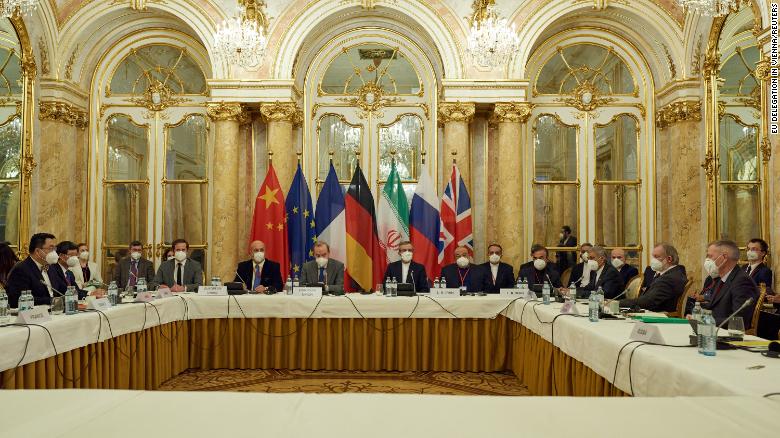
Vienna, Austria EU, Iranian and Russian diplomats sounded upbeat as Iran and world powers held their first talks in five months on Monday to try to save their 2015 nuclear deal, despite Tehran taking a tough stance in public that Western powers said would not work.
“I feel extremely positive about what I have seen today,” Enrique Mora, the EU official chairing the talks, said after the meeting — the seventh round of talks aimed at reviving a deal under which Iran limited its disputed uranium enrichment program in return for relief from US, EU and UN economic sanctions.
“They have accepted that the work done over the first six rounds is a good basis to build our work ahead,” he said. “We will be of course incorporating the new political sensibilities of the new Iranian administration.”
Nuclear power is never safe or economical
“I hope Sen. Durbin changes his mind about promoting nuclear energy. The real carbon-free sources of electricity are wind and solar.”
Letters to the Editor Chicago Sun Times
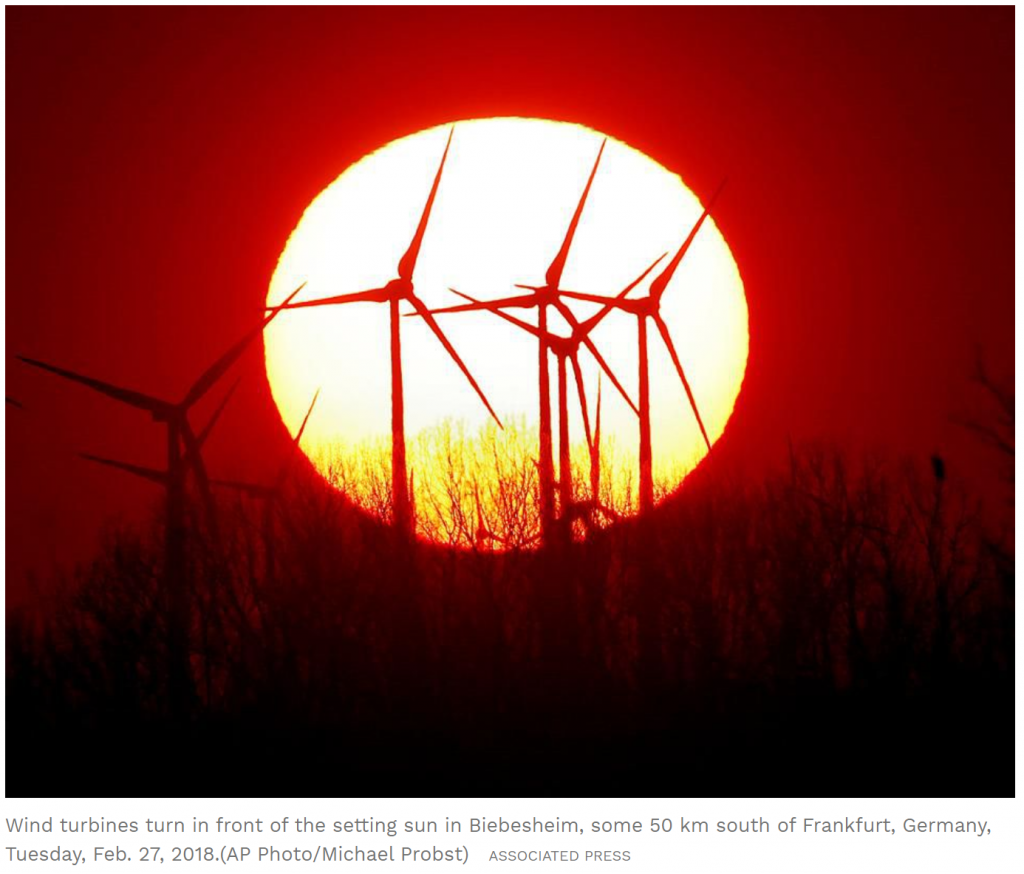
I cannot disagree more with the assertion by Sen. Dick Durbin in a recent Sun-Times op-ed that nuclear power is a necessary and viable way to combat climate change.
Electricity production by nuclear power is not, and can never be made, safe and economical.
When nuclear power plants were first touted in the 1950s as a new and safe method for producing electricity, it was said the electricity would be “too cheap to meter.” This is pure nonsense! If it was so safe, why weren’t any power plants built and put on line until passage of the Price-Anderson Act? The law has been amended a number of times and greatly limits the liability of operators of nuclear power plants.
Anything paid out beyond the limits set in Price-Anderson would take years of lawsuits.
Sen. Durbin wrote “It is past time for Congress to step up and develop a comprehensive, consent-based plan to store nuclear waste.” That’s an understatement. Nuclear waste is stored within a half-mile of Lake Michigan at the now-closed Zion nuclear power plant. Why is it close to the source of our drinking water? Because there is nowhere to ship it! Plans to ship such waste to a depository in Yucca Mountain in the southwest fell through when some improperly stored barrels burst into flames, releasing large amounts of high-level radioactive material.
Who does the senator think will agree to a “consent-based plan” when there is no known method of safely storing these dangerous materials for thousands of years, the time it takes for radioactive decay to make it safe for the environment?
Sen. Durbin argued that “we must ensure the nuclear fleet remains safe and economical,” but nuclear power has never been economical. As far as I know, the last time a permit was approved for a new nuclear plant was during the Obama administration. That plant in Georgia is only about half complete, although it was to be finished by now and the cost is already double the initial estimate.
The current “fleet,” as Sen. Durbin called them, of nuclear power plants were designed and engineered to last about 30 to 40 years. Most of our country’s plants are near that age. Their internal systems are constantly bombarded by radioactive particles, making the metal in the systems more brittle and prone to failure every year. Subsidizing them is a waste of taxpayer money and a dangerous gamble with our lives.
I hope Sen. Durbin changes his mind. The real carbon-free sources of electricity are renewables: wind and solar.
George Milkowski, West Ridge
Letters to the Editor: Nuclear energy may not emit carbon, but it isn’t ‘clean’

To the editor: Steven Chu and Ernest Moniz are both professors who served as U.S. Energy secretary. They have more science credentials than most mortals. I am none of those things.
Yet, I was concerned when I read in their piece advocating for the continued use of the Diablo Canyon nuclear plant past the planned 2025 decommissioning that they referred to the electricity it produces as “clean.”
I recognize that they did so in order to differentiate nuclear from energy sources that emit carbon dioxide. However, the lack of carbon emissions notwithstanding, can nuclear energy truly be called clean?
There is the not-so-small matter of spent nuclear fuel. Where does it go? Where will it go? It’s currently in a cooling pool on-site. Owner Pacific Gas and Electric has requested permission to develop a dry cask storage system on-site; it did not estimate how long the spent fuel would be stored there.
Spent fuel is radioactive for a very long time. Whichever way you store it, if anything compromises the containment, the danger is released.
Carbon emissions or none, it is misleading to refer to nuclear energy as clean, especially when it comes to its impact on the environment.
Elise Power, Garden Grove
..
To the editor: I was energized by the piece on the Diablo Canyon nuclear plant. It reminded me of the sad situation at our local San Onofre Nuclear Generating Station.Continue reading
Pilgrim nuclear plant may release 1M gallons of radioactive water into bay. What we know
“Diane Turco, of Harwich, the director of Cape Downwinders, a citizen group that was at the forefront of the effort to close Pilgrim, called any option that included sending radioactive water into the bay “outrageous” and “criminal.” Turco said she has no confidence in the decommissioning process.
“The process has been to allow radioactivity into the environment,” she said. “The answer should be no you can’t do that.””
PLYMOUTH — One of the options being considered by the company that is decommissioning the closed Pilgrim Nuclear Power Station is to release around one million gallons of potentially radioactive water into Cape Cod Bay.
The option had been discussed briefly with state regulatory officials as one possible way to get rid of water from the spent fuel pool, the reactor vessel and other components of the facility, Holtec International spokesman Patrick O’Brien said in an interview Wednesday. It was highlighted in a report by state Department of Environmental Protection Deputy Regional Director Seth Pickering at Monday’s meeting of the Nuclear Decommissioning Citizens Advisory Panel in Plymouth.
“We had broached that with the state, but we’ve made no decision on that,” O’Brien said.
As of mid-December, Holtec will complete the process of moving all the spent fuel rods into casks that are being stored on a concrete pad on the Pilgrim plant site in Plymouth. After that, O’Brien told the panel, the removal and disposal of other components in those areas of the facility will take place and be completed sometime in February.
What to expect as Iran nuclear talks resume next week
“New round of talks unlikely to produce breakthrough but will shed light on posture of new Iranian government, analysts say.”
By Ali Harb Aljazeera aljazeera.com
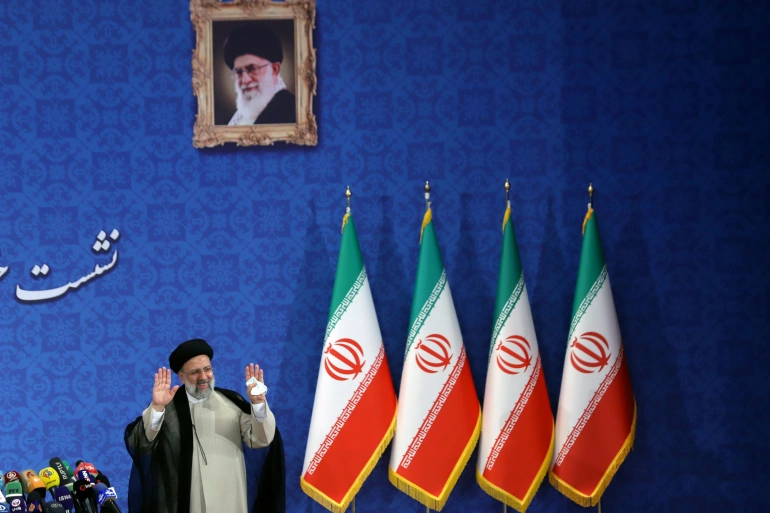
“We’re going to find out how different these [Iranian] hardliners are from previous hardliners; we’re going to find out if they’re going to be a little softer,” said Negar Mortazavi, an Iranian-American journalist and analyst.
“And we’re also going to find out if the Americans have really realised that they missed an opportunity, and that they should change their position to some extent.”
Proponents of the deal, including Mortazavi, have criticised US President Joe Biden for not moving with urgency to restore the agreement in the first months of his administration, when a more moderate Iranian government headed by former President Hassan Rouhani was in charge.
Six rounds of talks in Vienna between April and June failed to forge a path back into the agreement.
“That golden window of opportunity was short, and the Biden team completely missed it,” Mortazavi told Al Jazeera.
Nuclear News Archives – 2021
Biden Administration Asked to Review Plutonium Pit Expansion Plans
Jay Coghlan of Nuclear Watch New Mexico: “It’s important to note that no future pit production is to maintain the safety and reliability of the existing nuclear weapons stockpile. Instead, it is for speculative new nuclear weapons designs that can’t be tested because of the international testing moratorium, or perhaps worse yet may prompt the U.S. back into testing, after which surely other nations would follow.”
FEBRUARY 11, 2021
Public interest organizations sent a letter to the U.S. Department of Energy (DOE) requesting that it address calls for a rigorous environmental review of plans to expand production of nuclear bomb cores at the Los Alamos National Laboratory in New Mexico and the Savannah River Site in Aiken, South Carolina.
The non-profit groups—Nuclear Watch New Mexico, SRS Watch and Tri-Valley Communities Against a Radioactive Environment—have previously submitted a number of formal comments and information related to the environmental and public health risks associated with a significant expansion of plutonium “pit” production at the two DOE sites.
Continue reading
Consequences of Uranium Mining in the Southwest
Addressing the consequences of uranium mining in the Southwest, Anna Benally said, “When uranium mining came to Navajo Land, we were never told it was unsafe to be around it. We were never told to keep our children from playing near it or keep our livestock from coming around it. We were just happy to have jobs.”
By: Kristin Scheer | Peace Works Kansas City
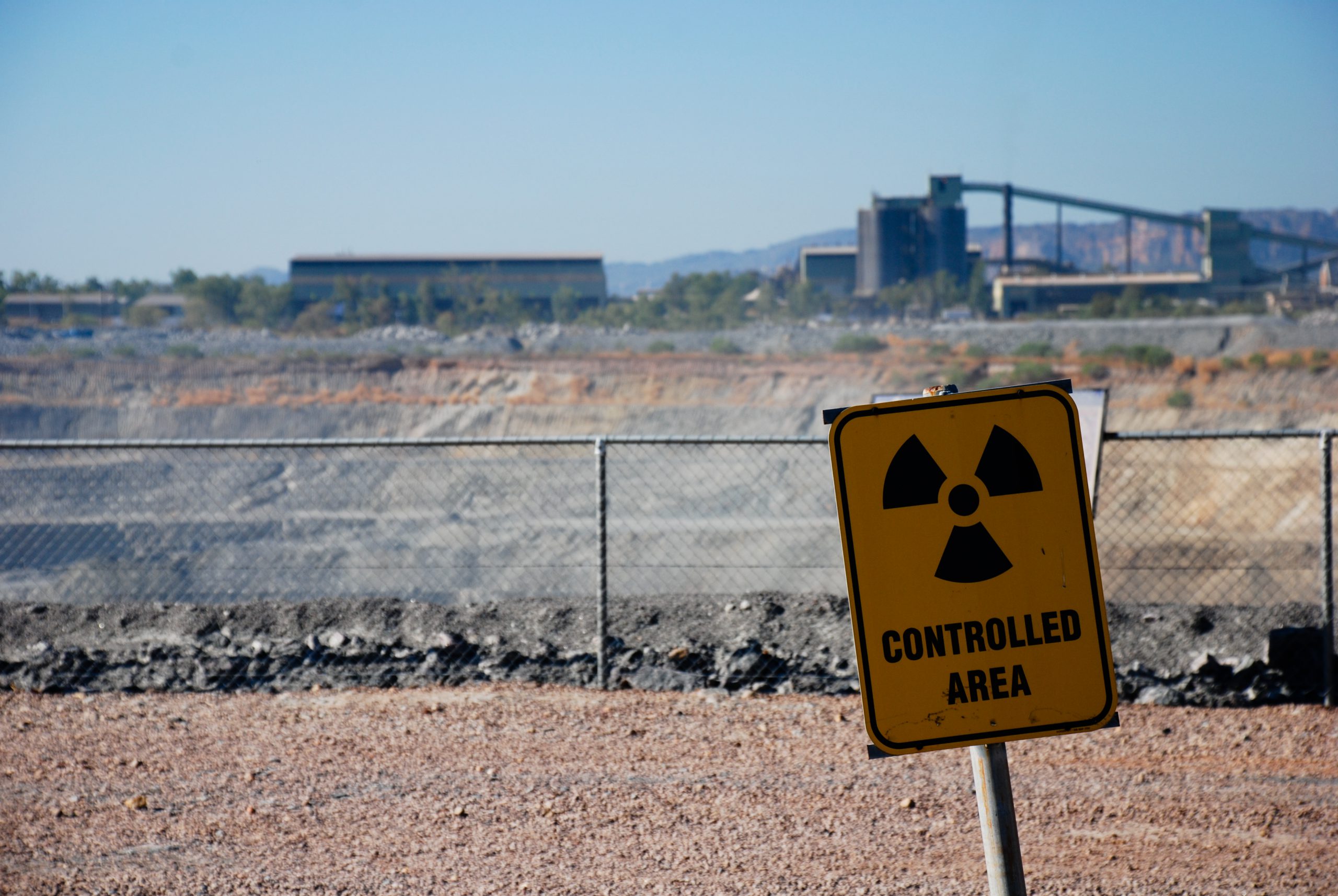
Uranium mining is still causing problems in the US. This was the topic of Radio Active Magazine on KKFI, 90.1 FM Community Radio, on Feb. 9. Activists from the Multicultural Alliance for a Safe Environment (MASE), based in Albuquerque, NM, joined PeaceWorks-KC leaders for the program.
The MASE activists on the program were Anna Benally, a former uranium mine employee turned activist who is working to heal the land and protect the health of people and livestock, and Susan Gordon, coordinator of MASE. PeaceWorks Board members Ann Suellentrop and myself introduced the MASE leaders and interviewed them. The podcast is online at https://kkfi.org/program-episodes/fighting-uranium-contamination-in-the-southwest/.
Atomic weapons plan risky for SC, lawyers say. Noted legal service joins fray
Savannah River Site Watch, Nuclear Watch New Mexico and Tri-Valley CARES recently retained the Environmental Law Project. They say pit factories are expensive, unnecessary, needlessly threaten the environment, and could leave unused plutonium stranded permanently in places like SRS.
BY: SAMMY FRETWELL | thestate.com FEBRUARY 12, 2021
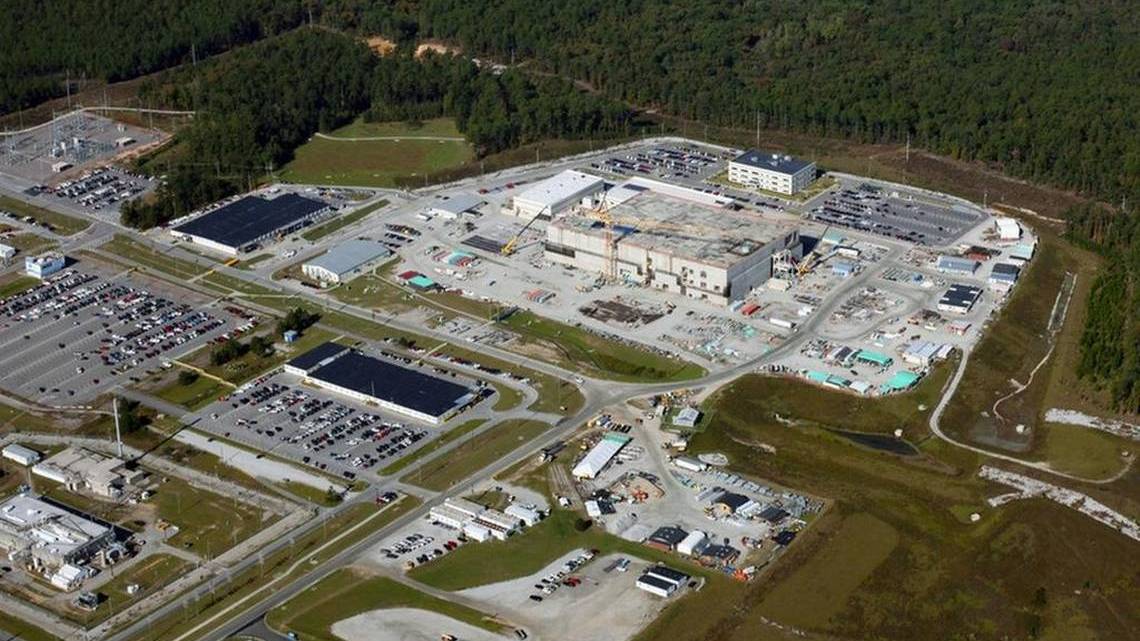
A South Carolina legal service has joined the fight against an atomic weapons components factory at the Savannah River Site, raising the possibility that environmental groups will sue the federal government to stop the effort.
The South Carolina Environmental Law Project, a non-profit service with an extensive record of arguing cases in court, outlined concerns about the factory in a letter this week to the U.S. Department of Energy. The letter called the proposed factory risky and in need of further study.
At issue is a proposal to build a nuclear weapons pit plant that would use plutonium, a deadly long-lived radioactive material, at the Savannah River Site.
The pit factory would produce potentially thousands of jobs, but is drawing opposition from environmental groups in South Carolina, New Mexico and California.
In Santa Fe, protesting LANL’s arrival
Luis Sánchez Saturno / The New Mexican Feb 12, 2021
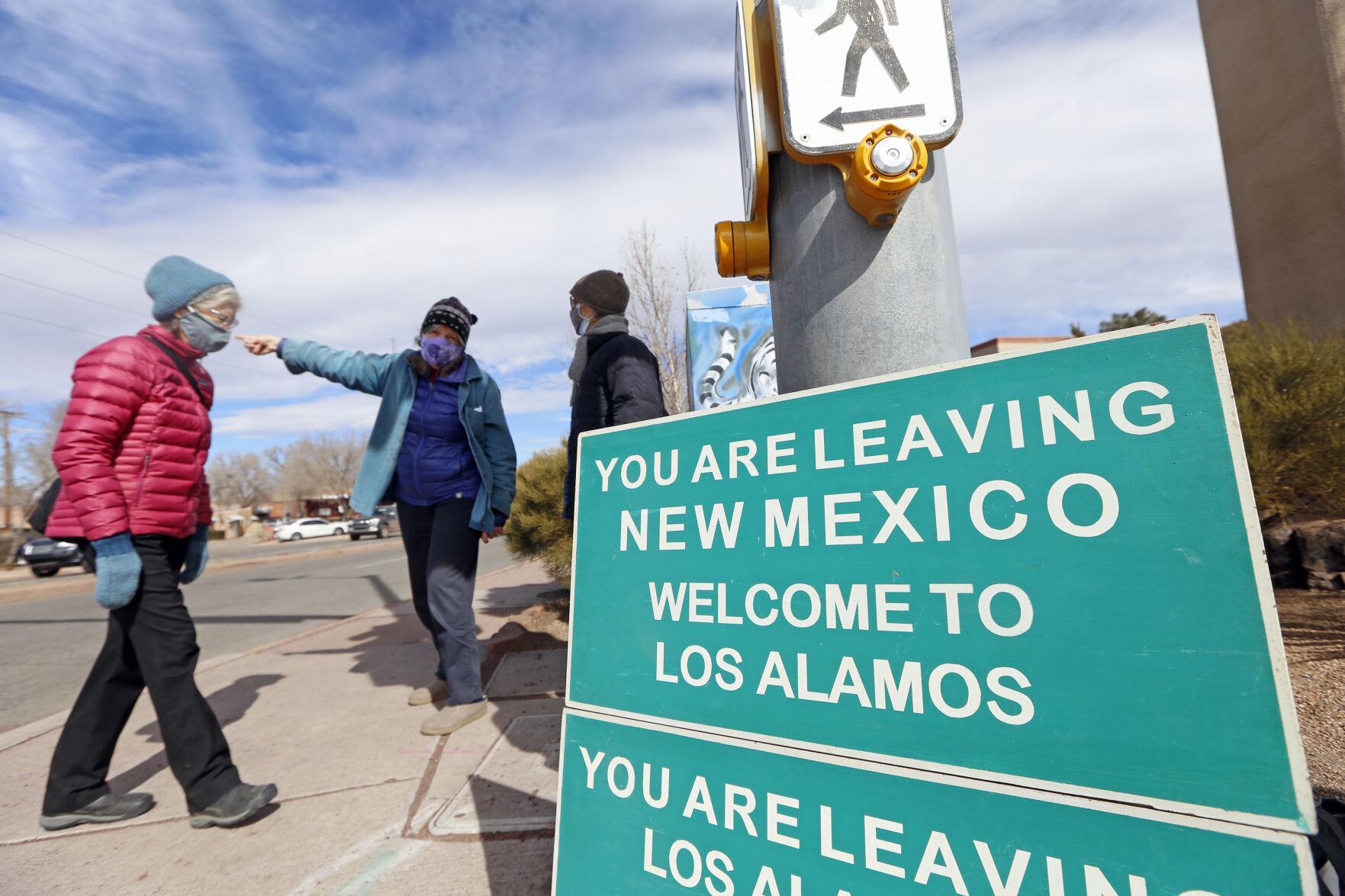
Los Alamos lab, birthplace of the atomic bomb, STILL under threat from wildfires despite repeated major incidents
“The threat and risks of wildfire to the lab and northern New Mexico will continue to increase because of climate warming, drought and expanded nuclear weapons production,” said Jay Coghlan, director of the group Nuclear Watch New Mexico.
A recent audit by the US Energy Department’s inspector general found that threat-reduction measures such as the maintenance of the lab’s network of fire roads, strategic clearing of vegetation in the surrounding area as well as the production of a coherent preparedness and mitigation plan had not been carried out
Photographic evidence included in the report indicated a tree density of 400 to 500 per acre, 10 times the recommended safe level of 40 to 50 trees per acre.
Audit Raises Concerns About Wildfire Risks at US Nuclear Lab
“The threat and risks of wildfire to the lab and northern New Mexico will continue to increase because of climate warming, drought and expanded nuclear weapons production,” said Jay Coghlan, director of the group Nuclear Watch New Mexico.
BY: SUSAN MONTOYA BRYAN | wokv.com February 10, 2021
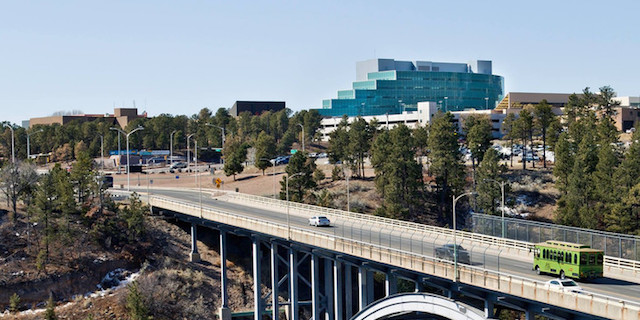
ALBUQUERQUE, N.M. — (AP) — One of the nation’s premier nuclear laboratories isn’t taking the necessary precautions to guard against wildfires, according to an audit by the U.S. Energy Department’s inspector general.
The report comes as wildfire risks intensify across the drought-stricken U.S. West. Climatologists and environmentalists have been warning about worsening conditions across the region, particularly in New Mexico, which is home to Los Alamos National Laboratory and where summer rains failed to materialize last year and winter precipitation has been spotty at best.
The birthplace of the atomic bomb, Los Alamos has experienced hundreds of millions of dollars in losses and damage from major wildfires over the last two decades. That includes a blaze in 2000 that forced the lab to close for about two weeks, ruined scientific projects, destroyed a portion of the town and threatened tens of thousands of barrels of radioactive waste stored on lab property.
Watchdog groups say the federal government needs to take note of the latest findings and conduct a comprehensive review before the lab ramps up production of key plutonium parts used in the nation’s nuclear arsenal.
Los Alamos Nuclear Weapons Lab Opens Office in the City of the Santa Fe (“Holy Faith”) of Peace and Environmental Protection
FEBRUARY 10, 2021
Santa Fe, NM – A Lab press release has announced that “[c]onnections between Los Alamos National Laboratory and the City of Santa Fe will be strengthened with the Laboratory’s opening of a new downtown office” after signing a 10-year lease on a 28,000-square-foot building. The Lab’s press release ignores LANL’s $2.9 billion nuclear weapons production budget (up 33% in one year), its proposed 46% cut to cleanup to $120 million, serious groundwater contamination and recent reports how it has neglected wildfire protection. Two catastrophic wildfires in the last 21 years on or near the Lab blanketed a large portion of northern New Mexico with possibly contaminated smoke.
The City of Santa Fe’s official name is the “La Villa Real de la Santa Fe de San Francisco de Asís” (“The Royal Town of the Holy Faith of Saint Francis of Assisi”), in honor of the beloved saint who preached peace and environmental protection and from whom the present Pope draws his name. Pope Francis has repeatedly called for the abolition of nuclear weapons and while in Japan paid homage to the victims of the Hiroshima and Nagasaki bombings. Those atomic bombs were designed and produced at the Los Alamos Lab.
LANL not serious about wildland fires
BY: T.S. Last / Journal North Copyright © 2021 Albuquerque Journal Feb, 9, 2021
SANTA FE – A recently released report by the Department of Energy’s Office of Inspector General suggests that managers at Los Alamos National Laboratory did not take wildland fire prevention seriously enough, despite two catastrophic wildland fires in the past 20 years that threatened the lab and the town, costing taxpayers millions of dollars.
“Our review found that activities designed to reduce the impact from wildland fire had not been fully implemented at Los Alamos National Laboratory (LANL) in accordance with site plans,” says the opening sentence of a 14-page memo from the Inspector General’s office dated Feb. 1.
What’s worse, the report says, some plans were never drafted, and some policies put into place after the Cerro Grande Fire in 2000 and the Las Conchas Fire in 2011 were not being followed.
It adds that lab managers haven’t developed a “comprehensive risk-based approach to wildland fire management,” as required by the Federal Wildland Fire Management Policy. The report also describes a “lack of formality.”
“Specifically, the contractor’s Wildland Fire Plan lacked requirements for documenting wildland fire management activities, and responsibilities for implementation were not well defined,” the report says.
The contractor referred to is Triad National Security LLC, which in November 2019 took over management of the lab, which is tasked with developing and manufacturing parts for nuclear weapons. Previously, Los Alamos National Security LLC had held the management contract since 2006.
It appears evident that some of the problems identified in the report predate Triad’s involvement.
The report says that there are about 2,000 structures, including 13 nuclear facilities, with an estimated value of $14.2 billion on approximately 23,000 acres of lab property.
It notes that the 2000 Cerro Grande Fire, which burned 43,000 acres, including about 7,500 acres of LANL property, resulting in $331 million in damage to the lab alone. That does not include an estimated $15 million in lost productivity per week during a 15-day shutdown and recovery period.
The Cerro Grande Fire was a “crown fire” that burned through the tree canopy and spread quickly, and the report has an entire section on mitigation of crown fires.
Despite recognition of the risk, mitigation measures to reduce the risk of crown fires had not been performed.
LANL Falls Behind on Wildfire Protection While Expanding Nuclear Weapons Production Watchdog Calls for New Site-Wide Environmental Impact Statement
FEBRUARY 9, 2021
Santa Fe, NM – The Department of Energy’s Inspector General is reporting that the Los Alamos National Laboratory (LANL) is falling seriously behind in wildfire protection. This is despite the fact that the 2000 Cerro Grande Fire forced the mandatory evacuation of both LANL and the Los Alamos townsite, burned 3,500 acres of Lab property and came within a half-mile of Area G, its largest waste dump. At the time Area G stored above ground some 40,000 barrels of plutonium-contaminated radioactive wastes. It could have been catastrophic had they burst and sent respirable airborne plutonium across northern New Mexico (inhaled plutonium is a very serious carcinogen).
In 2011 the Los Conchas Fire raced 13 miles in 24 hours to the Lab’s western boundary, where it was stopped along State Highway 4. Both it and the Cerro Grande Fire sent huge plumes of harmful smoke across northern New Mexico, possibly carrying Lab contaminants as well (operation of radioactive air emissions monitoring equipment was suspended during the Cerro Grande Fire).
Report: LANL not managing forests to prevent wildfires
Jay Coghlan, executive director of the nonprofit Nuclear Watch New Mexico, said the lab puts most of its attention on producing nuclear weapons and neglects forest maintenance, despite the disastrous Cerro Grande Fire that destroyed dozens of its structures.
“Nuclear weapons above all,” Coghlan said.”
By Scott Wyland [email protected] / sfnewmexican.com Feb 9, 2021
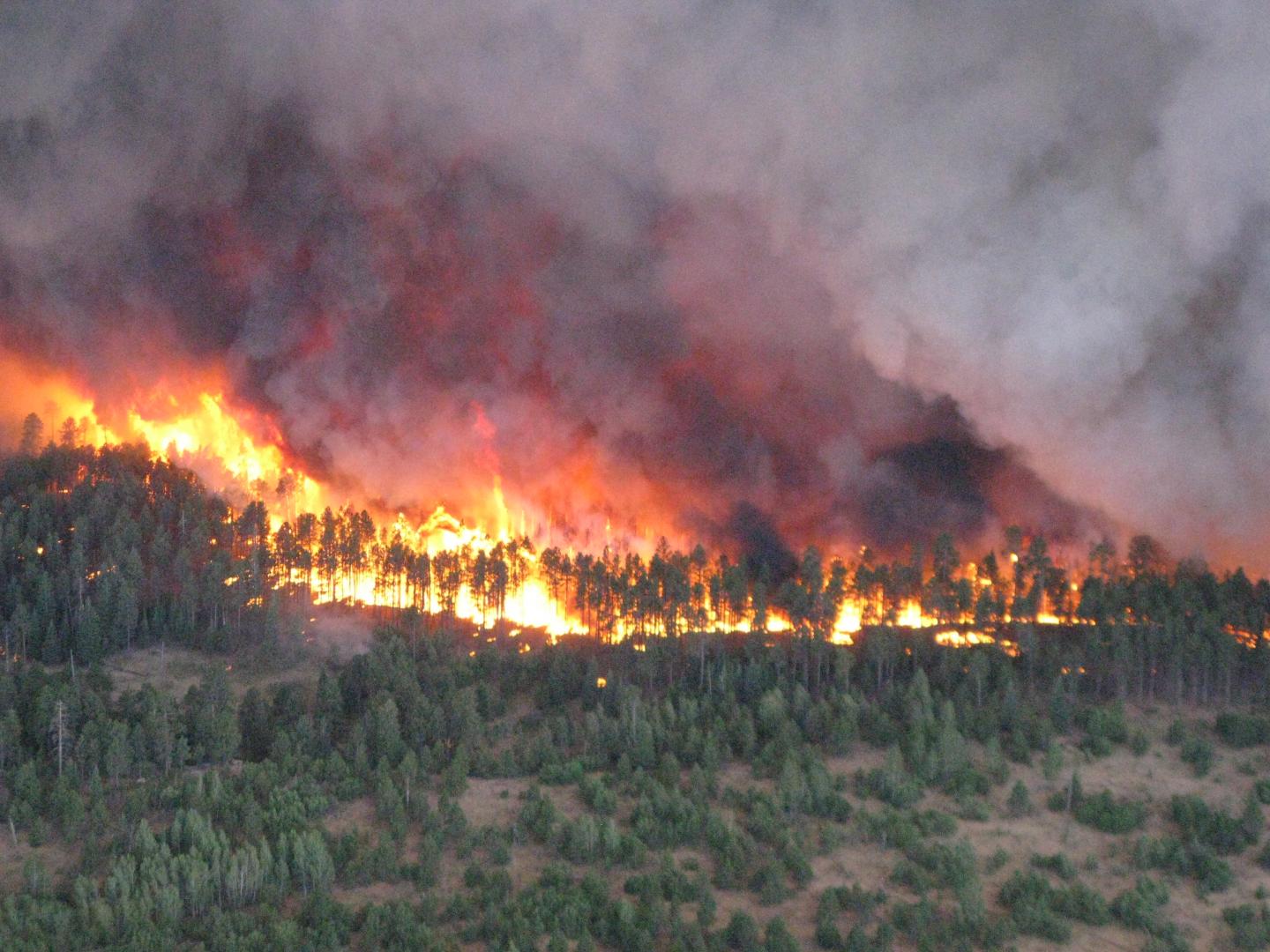
Los Alamos National Laboratory has failed to properly manage its forested lands, increasing the threat of wildfires at lab sites and surrounding areas, according to a federal watchdog.
The lab has not thinned trees or cleared forest debris from many wooded areas, nor has it maintained service roads to ensure safe passage for firefighting crews, boosting the potential for “devastating wildfires” like the Cerro Grande Fire in 2000, the U.S. Energy Department’s inspector general said in a strongly worded report released this week.
The report criticized the lab’s main contractor, Triad National Security LLC, for not following fire management plans and not documenting required yearly activities to prepare for and prevent possible wildfires at the site.
“Our review found that activities designed to reduce the impact from wildland fire had not been fully implemented at the Los Alamos National Laboratory in accordance with site plans,” the report said.
The report comes as the federal Drought Monitor shows Los Alamos County and much of the state as being in exceptional drought — the most severe condition — which raises the risks of wildfires.
Jay Coghlan from Nukewatch New Mexico and Kevin Kamps from Beyond Nuclear discuss the recent developments in Nuclear Weapons proliferation and the new international ban on nuclear weapons.
Living on the Edge also cover reasons why nuclear power may not be the low carbon panacea for transitioning our electric grid that is so widely promoted these days.
Plan to send diluted plutonium to Waste Isolation Pilot Plant moves forward
A plan to dispose of surplus plutonium at the Waste Isolation Pilot Plant through a dilution process that would reduce the waste to radiation levels allowable at the facility moved forward at the end of 2020 and the process was expected to continue through 2022.
By: Adrian Hedden | currentargus.com February 8, 2021
The National Nuclear Security Administration (NNSA) – an arm of the U.S. Department of Energy – announced in December its intention to draft an environmental impact statement on the project and a public comment scoping was extended until Feb. 18.
Comments on the project can be made to the NNSA via email to [email protected] with the subject line SPDP EIS Scoping Comment.
The EIS will study the scope of the project and its potential impacts on the environment and DOE operations at numerous sites involved in the storage, down-blending and final disposal of the plutonium.
Radiation Illnesses and COVID-19 in the Navajo Nation
“In Indigenous lands where nuclear weapons testing took place during the Cold War and the legacy of uranium mining persists, Indigenous people are suffering from a double whammy of long-term illnesses from radiation exposure and the COVID-19 pandemic.”
By: Jayita Sarkar, Caitlin Meyer | thebulletin.org February 3, 2021
The COVID-19 pandemic is wiping out Indigenous elders and with them the cultural identity of Indigenous communities in the United States. But on lands that sprawl across a vast area of the American West, the Navajo (or Diné) are dealing not just with the pandemic, but also with another, related public health crisis. The US Centers for Disease Control and Prevention says COVID-19 is killing Native Americans at nearly three times the rate of whites, and on the Navajo Nation itself, about 30,000 people have tested positive for the coronavirus and roughly 1,000 have died. But among the Diné, the coronavirus is also spreading through a population that decades of unsafe uranium mining and contaminated groundwater has left sick and vulnerable.
The Future of War in Biden’s America
Danny Sjursen offers a Bidenesque tour of U.S. militarism.
By: Danny Sjursen Tom’s Dispatch | consortiumnews.com

Hard as it is to believe in this time of record pandemic deaths, insurrection, and an unprecedented encore impeachment, Joe Biden is now officially at the helm of the U.S. war machine. He is, in other words, the fourth president to oversee America’s unending and unsuccessful post-9/11 military campaigns.
In terms of active U.S. combat, that’s only happened once before, in the Philippines, America’s second-longest (if often forgotten) overseas combat campaign.
Yet that conflict was limited to a single Pacific archipelago. Biden inherits a global war — and burgeoning new Cold War — spanning four continents and a military mired in active operations in dozens of countries, combat in some 14 of them, and bombing in at least seven.
Nukes aren’t just for bombers and subs. Here are some unusual ways militaries have also planned to drop the bomb
Throughout the Cold War, the prospect of bombers dropping nuclear bombs and submarines launching nuclear-tipped missiles terrified people around the world. Those were the major delivery methods, but both militaries developed an array of smaller nuclear weapons for tactical use, and planners in those militaries gave very real consideration to using them.
By: Benjamin Brimelow | businessinsider.com Jan 28, 2021
The Special Atomic Demolition Munition (SADM) was small enough to fit into a large backpack but still had a yield of a kiloton. It was intended to be planted by small, specially trained teams that would set a time fuse before attempting to escape.
You can actually view these asinine “backpack nukes” at the National Museum of Nuclear Science & History in Albuquerque. These “small” weapons, many of them more powerful than the nuclear bomb dropped on Hiroshima, would have obliterated any battlefield and irradiated much of the surrounding area.
The Little Boy (15 kilotons) and Fat Man (21 kilotons) atomic bombs dropped on Hiroshima and Nagasaki, respectively, remain the only nuclear weapons used in combat.
Those bombs destroyed the cities, killed or wounded hundreds of thousands of people, and left thousands more with long-term health problems. The carnage and destruction are the first things that come to mind when discussing nuclear weapons.
But nukes weren’t just for destroying cities. Early in the Cold War, the tactical use of nuclear weapons on the battlefield was not only researched extensively but actually considered.
Unknown Impact: County asks Los Alamos National Labs to assess environmental impact before expanding nuclear production
Santa Fe County wants Los Alamos National Laboratories to take stock of its impact on the environment and surrounding communities before pushing ahead with plans to expand.
By Leah Cantor | sfreporter.com Jan 27, 2021
On Tuesday, the Board of County Commissioners unanimously passed a resolution asking the National Nuclear Safety Administration to complete a new site-wide environmental impact statement for LANL in compliance with the National Environmental Policy Act before expanding plutonium pit production.
“The public health and safety is so important,” said Commissioner Anna Hansen, noting that the NEPA process is one of the only avenues for the public to weigh in on what goes on at the labs. “We have a longstanding tradition of promoting democracy and environmental protection in impending nuclear weapons by requesting that local governments be kept fully informed about projects to facilitate large scale production of additional plutonium warheads,” she said.
Yet right now, the labs’ full impact on Northern New Mexico is unknown. It’s been more than a decade since the last time the NNSA produced an EIS for the laboratory, and a lot has changed since then, including regional understanding of wildfire risks and potential water contamination from the labs.
Remembering the Night Two Atomic Bombs Fell—on North Carolina
Sixty years ago, at the height of the Cold War, a B-52 bomber disintegrated over a small Southern town. An eyewitness recalls what happened next.
By: Bill Newcott | nationalgeographic.com PUBLISHED JANUARY 22, 2021
BILLY REEVES REMEMBERS that night in January 1961 as unseasonably warm, even for North Carolina. But it got a lot hotter just before midnight, when the walls of his room began glowing red with a strange light streaming through his window.
“I was just getting ready for bed,” Reeves says, “and all of a sudden I’m thinking, ‘What in the world…?'”
The 17-year-old ran out to the porch of his family’s farm house just in time to see a flaming B-52 bomber—one wing missing, fiery debris rocketing off in all directions—plunge from the sky and plow into a field barely a quarter-mile away.
“Everything around here was on fire,” says Reeves, now 78, standing with me in the middle of that same field, our backs to the modest house where he grew up. “The grass was burning. Big Daddy’s Road over there was melting. My mother was praying. She thought it was the End of Times.”
Like any self-respecting teenager, Reeves began running straight toward the wreckage—until it exploded.
The Doomsday Datavisualizations



In setting the Doomsday Clock, the Bulletin’s Science and Security Board consults widely with colleagues across a range of disciplines and considers qualitative and quantitative information from a wide array of sources. These three visualizations display some of the kinds of public data that are available in the Bulletin’s three coverage areas: nuclear weapons, climate change, and disruptive technology.
The Doomsday Clock is a design that warns the public about existential threats, a metaphor that reminds the world of the perils that must be addressed if humanity is to continue survive. These three data visualizations can be seen as an artistic extension of the original design.
DESIGNED BY PENTAGRAM
Giorgia Lupi, Sarah Kay Miller, Phil Cox,
Ting Fang Cheng, Talia Cotton
In November 2011, the U.S. Senate designated January 27th as a National Day of Remembrance for the Nevada Test Site Downwinders. The Senate recognized the harm caused to Americans from radioactive fallout from the aboveground atomic tests in Nevada, which began on January 27, 1951 and ended on July 17, 1962. Nuclear testing by the U.S. government started in New Mexico with Trinity in July 1945, and the Crossroads Series of three tests followed in the Pacific in 1946. The United States took part in nuclear testing as part of the escalating Cold War arms race, and nuclear weapons proliferated. With each nuclear test, radioactive fallout spread globally.
FOR MORE INFORMATION VIEW LINKS BELOW
Downwinders And The Radioactive West Premieres January 27 at 7PM on PBS Utah
Why a National Day of Remembrance for Downwinders is Not Enough
Congress Introduces Legislation to Expand Compensation for Radiation Exposure
Why a National Day of Remembrance for Downwinders is Not Enough
“A day of recognition is important – these communities deserve to be recognized for the unimaginable sacrifice they unknowingly made to their country. But it is not enough. The best and most important way to honor these victims of the US nuclear weapons program is by compensating them and providing health care for the illnesses and deaths they have suffered.”
BY: LILLY ADAMS GUEST COMMENTARY, UCS | JANUARY 26, 2021, 10:56 AM EST
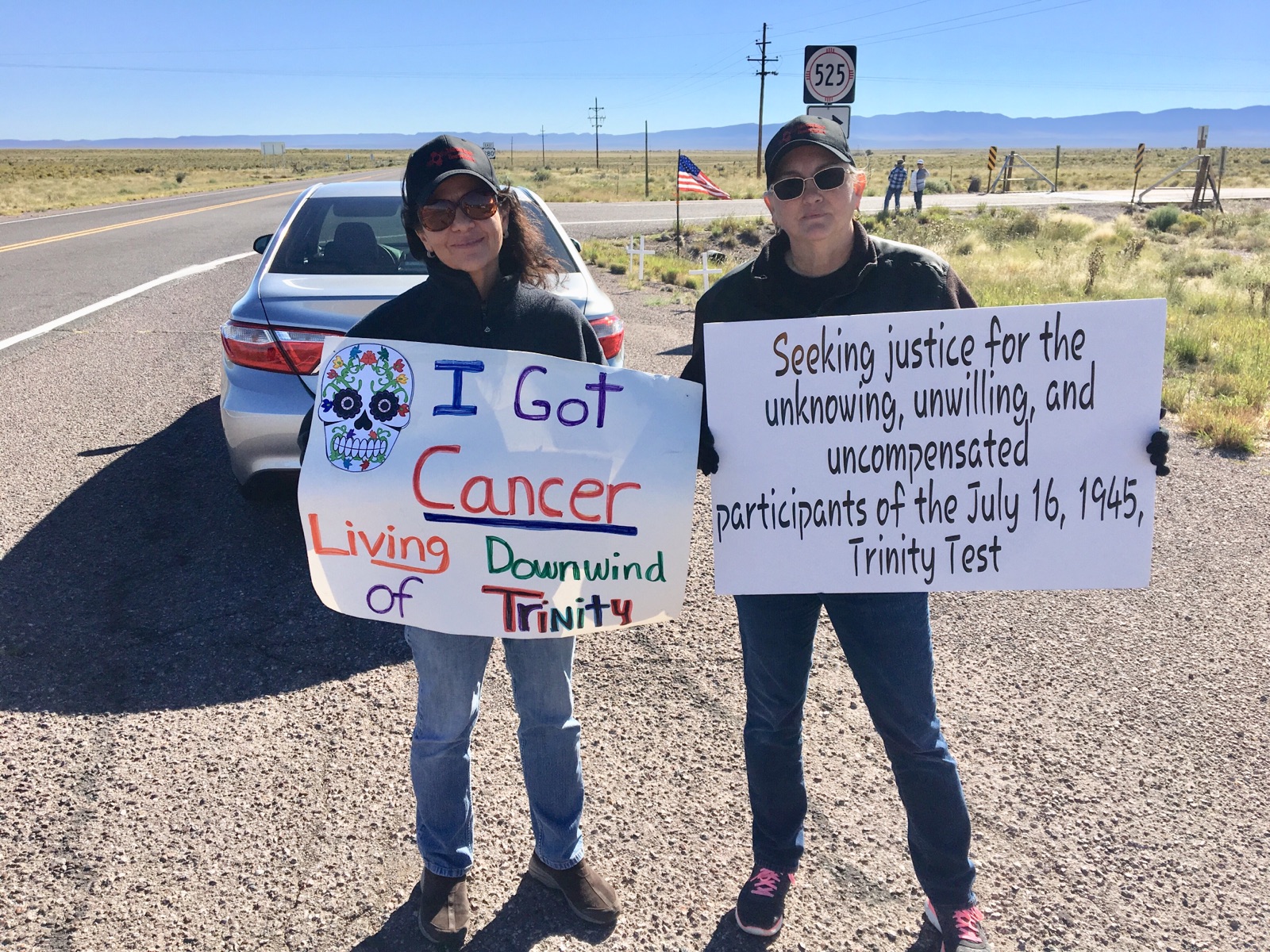
There’s no question that the US government killed and sickened many of its own people through explosive nuclear testing: estimates of the death toll in the United States from nuclear testing vary widely, from tens of thousands to hundreds of thousands. But the harm doesn’t stop there. Other nuclear weapons activities, like uranium mining, production, and waste storage and cleanup, have also caused unknown deaths and illnesses. As is so often the case, the people who have borne the heaviest burden of these activities are often people of color, Indigenous communities, women and children, and those living in poor, rural communities. These people are the largely ignored, often forgotten casualties of the Cold War and the US nuclear weapons program.
The Most Dangerous Situation Humanity Has Ever Faced
“The Bulletin of the Atomic Scientists announced Wednesday that the hands of the iconic Doomsday Clock remain at 100 seconds to midnight — as close to the end of humanity as the clock has ever been. The temptation, of course, in a dark hour is to cling to even the faintest signs of light and hope. And the truth is that there are some encouraging signs now emerging. However, we continue to teeter at the brink and moving the Clock away from midnight would provide false hope at a time when urgent action is what is needed.”.
Opinion by Edmund G. Brown Jr. and Robert Rosner / Updated 11:17 AM ET, Wed January 27, 2021
For a year now, the world has been ravaged by the horrors of Covid-19. It has caused millions to lose their jobs, overwhelmed health care systems and dramatically changed how we live. The disease has killed more than 2 million people and infected 100 million around the globe.
Even so, we face fundamentally greater threats to humanity than this pandemic. We refer to the catastrophic dangers which nuclear weapons and climate change pose — dangers that preceded this pandemic and will persist long after it ends. Unfortunately, and unlike the priority given to developing a vaccine against the virus, little progress was made to reduce the danger of the world’s nuclear weapons arsenal or to effectively slow the carbon emissions warming our planet in 2020. The sudden appearance and confused response to the virus makes all too clear how ill-prepared the world can be when it has to deal with an unprecedented threat of global magnitude.
UN Building Lit Up to Celebrate The Nuclear Ban Treaty Entry Into Force January 22





Here are five examples of the type of activities that will be Illegal under international law on 22 January 2021
One of the main problems with talking about nuclear weapons is that it often becomes abstract and hypothetical. Most people barely know which countries have nuclear weapons and do not know to what extent other actors are involved in maintaining and upholding nuclear weapons.
When the Treaty on the Prohibition of Nuclear Weapons (TPNW) enters into force on 22 January 2021, that will need to change.
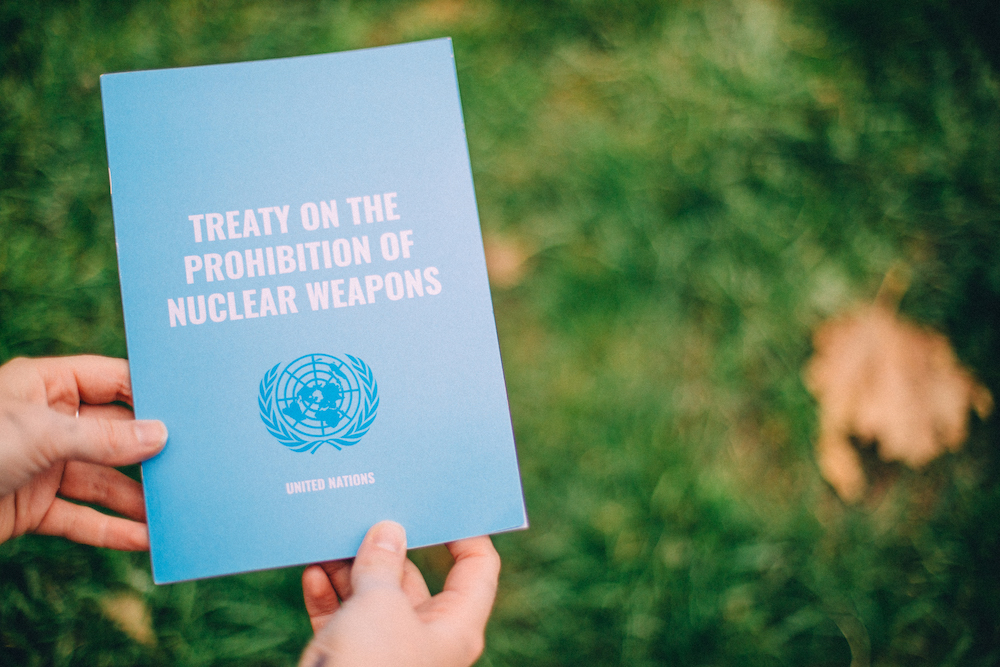
Here are five examples of the kind of activities that will be prohibited under the TPNW and who is currently doing this today. While the treaty will only be legally binding in the countries that have ratified the treaty, it will still create a powerful norm and should lead to increased protests and outrage in countries that haven’t joined the treaty that are behaving in contradiction of this new instrument of international law.
What the treaty prohibits
Article 1 of the treaty prohibits states parties from developing, testing, producing, manufacturing, transferring, possessing, stockpiling, using or threatening to use nuclear weapons, or allowing nuclear weapons to be stationed on their territory. It also prohibits them from assisting, encouraging or inducing anyone to engage in any of these activities.
Treaty Seeks End to Nuclear Madness
It is the beginning of a new movement that will see the elimination of the existential nuclear threat.
Ralph Hutchison, John LaForge | progressive.org
On January 22, the Treaty on the Prohibition of Nuclear Weapons will enter into force. The treaty bans the development, production, possession, deployment, testing, use and just about anything else you can imagine related to nuclear weapons.
Fifty years later, nine nuclear-armed militaries possess more than 13,000 nuclear weapons, arsenals that mock their claimed commitment to disarm “at an early date.”
Approved at the United Nations by 122 countries in 2017, and subsequently signed by 86 and ratified by 51 nations, the nuclear weapons ban will join the venerated status of international prohibitions already established against lesser weapons of mass destruction. These earlier agreements include the Geneva Gas Protocol, the Chemical Weapons Convention, the Biological Weapons Convention, the Ottawa Treaty or Mine Ban Convention and the Convention on Cluster Munitions.
Atop the Powerful Budget Committee at Last, Bernie Sanders Wants to Go Big
To the chagrin of Republicans, the democratic socialist senator will play a central role in shepherding Joseph R. Biden Jr.’s agenda through Congress.
“Sanders, the next chairman of the Senate Budget Committee, plans to take a hard look at fraud at the defense budget in his new perch, he tells POLITICO
“You understand you’re talking to the guy who led the effort to lower defense spending by 10 percent,” the Vermont Independent and self-described Democratic Socialist boasted.
You’re talking about the military budget, which is now higher than the next 10 nations combined,” he continued. “You’re talking about the Pentagon budget, which is the only major government agency which has not been able to undertake an independent audit. And I don’t think anyone has any doubt that there’s massive waste and cost overruns in the military budget.”
“I think if you check the record,” he added, “you’ll find that every major defense contractor has been found guilty of collusion and fraud.”
By Alan Rappeport and Jim Tankersley | nytimes.com
Shortly before the 2016 election, Paul D. Ryan of Wisconsin, the Republican nominee for vice president and the speaker of the House, told a group of college Republicans why he thought Democrats winning control of the Senate would be a policy nightmare.
“Do you know who becomes chair of the Senate Budget Committee?” Mr. Ryan asked. “A guy named Bernie Sanders. You ever heard of him?”
Republicans have long feared the prospect of Mr. Sanders, a self-described democratic socialist from Vermont, taking the helm of the powerful committee given his embrace of bigger government and more federal spending with borrowed money. With Democrats reclaiming the Senate, that fear is about to become a reality. Mr. Sanders, the most progressive member of the chamber, will have a central role in shaping and steering the Democrats’ tax and spending plans through a Congress that they control with the slimmest of margins.
Concern grows over massive US cyberattack – New Mexico’s national labs, Los Alamos and Sandia, cited as possible targets among many
Jay Coghlan, executive director of Nuclear Watch New Mexico, said the breach escalates the threat of a nuclear catastrophe.
“On top of the dangers that we faced during the Cold War this now raises new concerns…Could our nuclear weapons be hacked for malicious reasons? Could hackers take advantage of LANL’s checkered safety and security record and cause a life threatening event in our own backyard? The sooner we all have a nuclear weapons-free world the safer we will be.”
Copyright © 2020 Albuquerque Journal / BY: T.S. LAST / JOURNAL NORTH
 SANTA FE — While the Department of Energy says that a cyberoffensive was limited to business networks, concerns remain about the depth of the breach and what threat it could still pose to national security and New Mexico’s two national laboratories.
SANTA FE — While the Department of Energy says that a cyberoffensive was limited to business networks, concerns remain about the depth of the breach and what threat it could still pose to national security and New Mexico’s two national laboratories.
Some news reports say that the hacks are believed to have been instigated by a Russian intelligence agency. The reports specifically mention Los Alamos and Sandia national laboratories, where atomic research is conducted, as being vulnerable.
In addition, Los Alamos National Laboratory is tasked with producing plutonium pits, the triggering device in nuclear warheads.
Earlier this week the Cybersecurity and Infrastructure Security Agency (CISA) issued a warning, calling the hack “a grave risk” to federal, state, local and tribal governments, as well as critical infrastructure entities and private sector businesses. It said the suspected breach dates back to at least March.
In a joint statement this week, CISA, the FBI and the director of national intelligence said they were working together to investigate a “significant ongoing cybersecurity campaign.”\
‘Highly skeptical’: House Armed Services chairman concerned about SRS pit production
Biden administration expected to take ‘critical look’ at next-generation warhead, estimated to be twice as explosive as Trident
By: Colin Demarest [email protected] / postandcourier.com
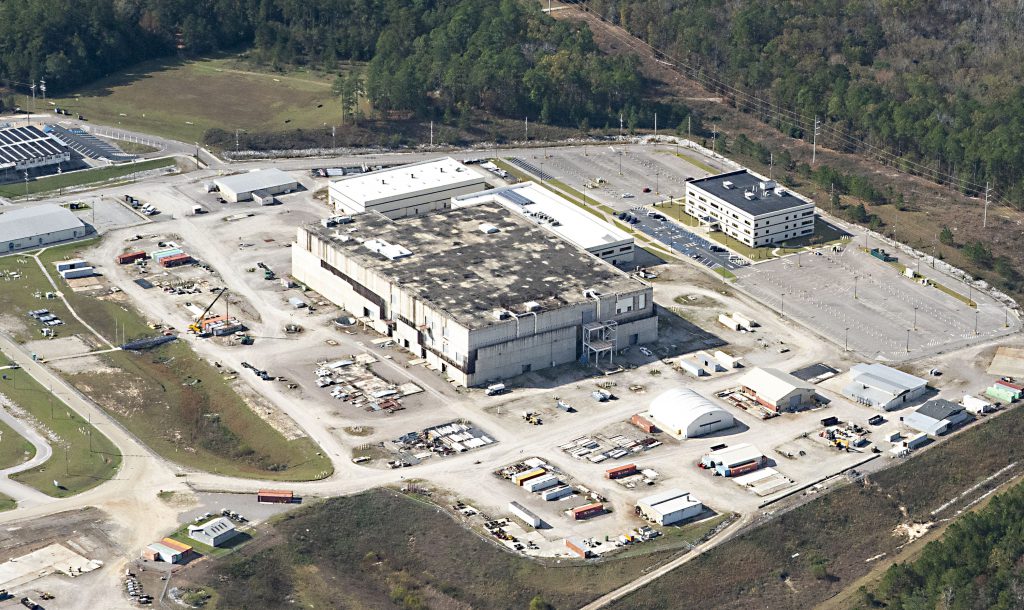
Photo courtesy of High Flyer
Likening the conversion of the failed Mixed Oxide Fuel Fabrication Facility to flipping a bowling alley into a restaurant, U.S. Rep. Adam Smith said he was “highly skeptical that they’re going to be able to turn that building into an effective pit production facility. Highly skeptical.”
US Nuclear Warhead Standoff ‘Has Significant Implications for UK’
Biden administration expected to take ‘critical look’ at next-generation warhead, estimated to be twice as explosive as Trident
By: Dan Sabbagh / theguardian.com
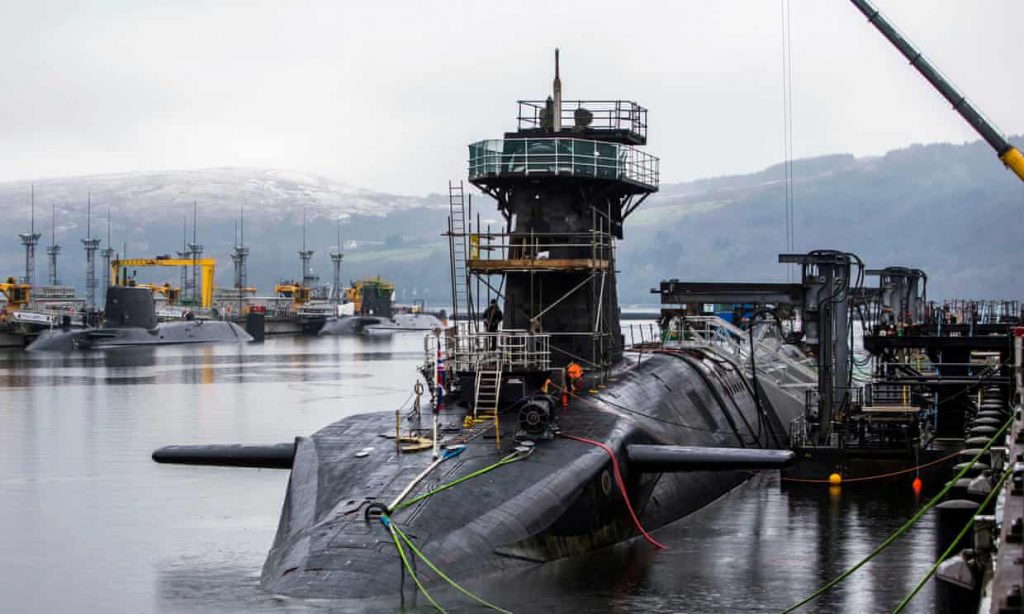
Britain’s most senior defence official admitted there would be “very significant implications” for the future of the Trident nuclear deterrent if Democrats in the US Congress refused to fund a next-generation warhead.
Sir Stephen Lovegrove, permanent secretary at the Ministry of Defence, said that the UK was monitoring the US standoff closely but could not say what impact a refusal to start work on the new W93 warhead would have – or how many billions it would cost.
THE SOFTENING RHETORIC BY NUCLEAR-ARMED STATES AND NATO ALLIES ON THE TREATY ON THE PROHIBITION OF NUCLEAR WEAPONS
BY: TOM SAUER & CLAIRE NARDON / warontherocks.com
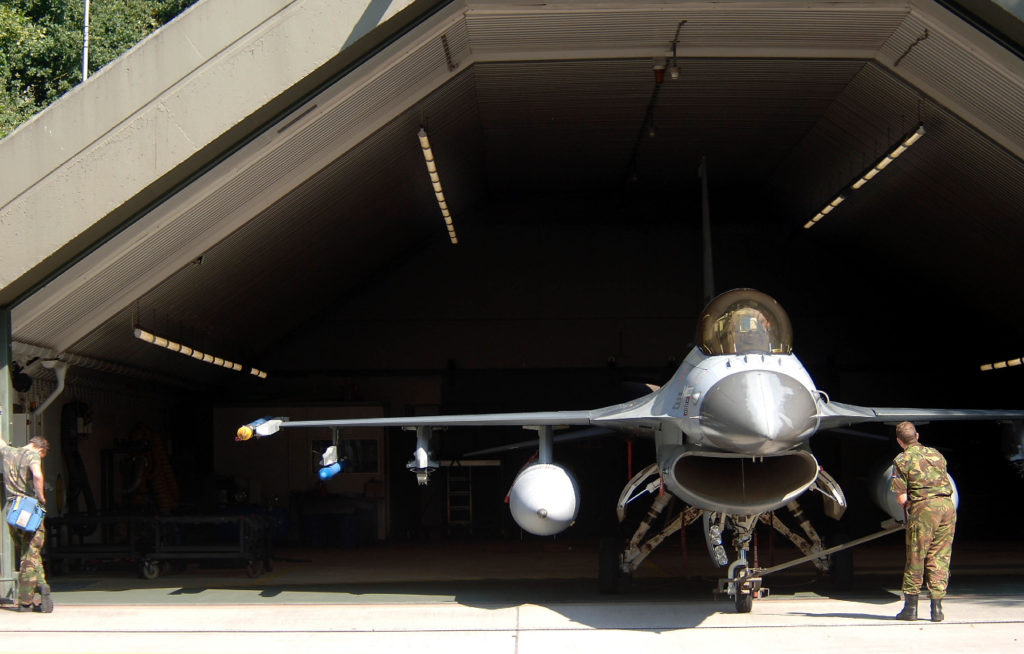
Probably the most iconic moment during the negotiations on the Treaty on the Prohibition of Nuclear Weapons (or “nuclear ban treaty”) was the gathering of a dozen allied ambassadors standing around U.S. Ambassador Nikki Haley in the corridors of the U.N. building in New York, protesting against the ongoing negotiations. While nuclear-armed states and NATO allies remain opposed to the treaty, the tone is softening, and at least two NATO allies are breaking the consensus.

